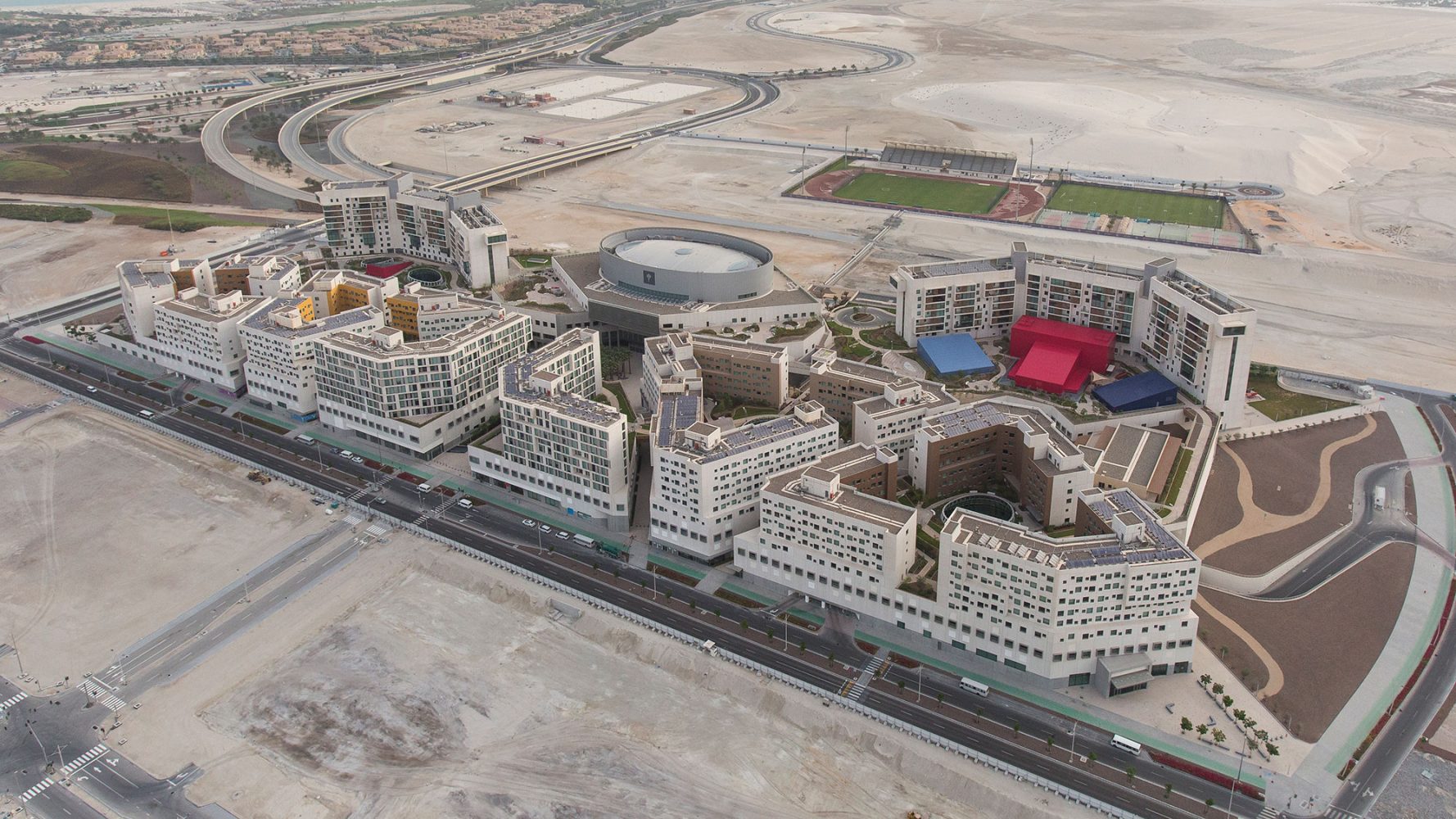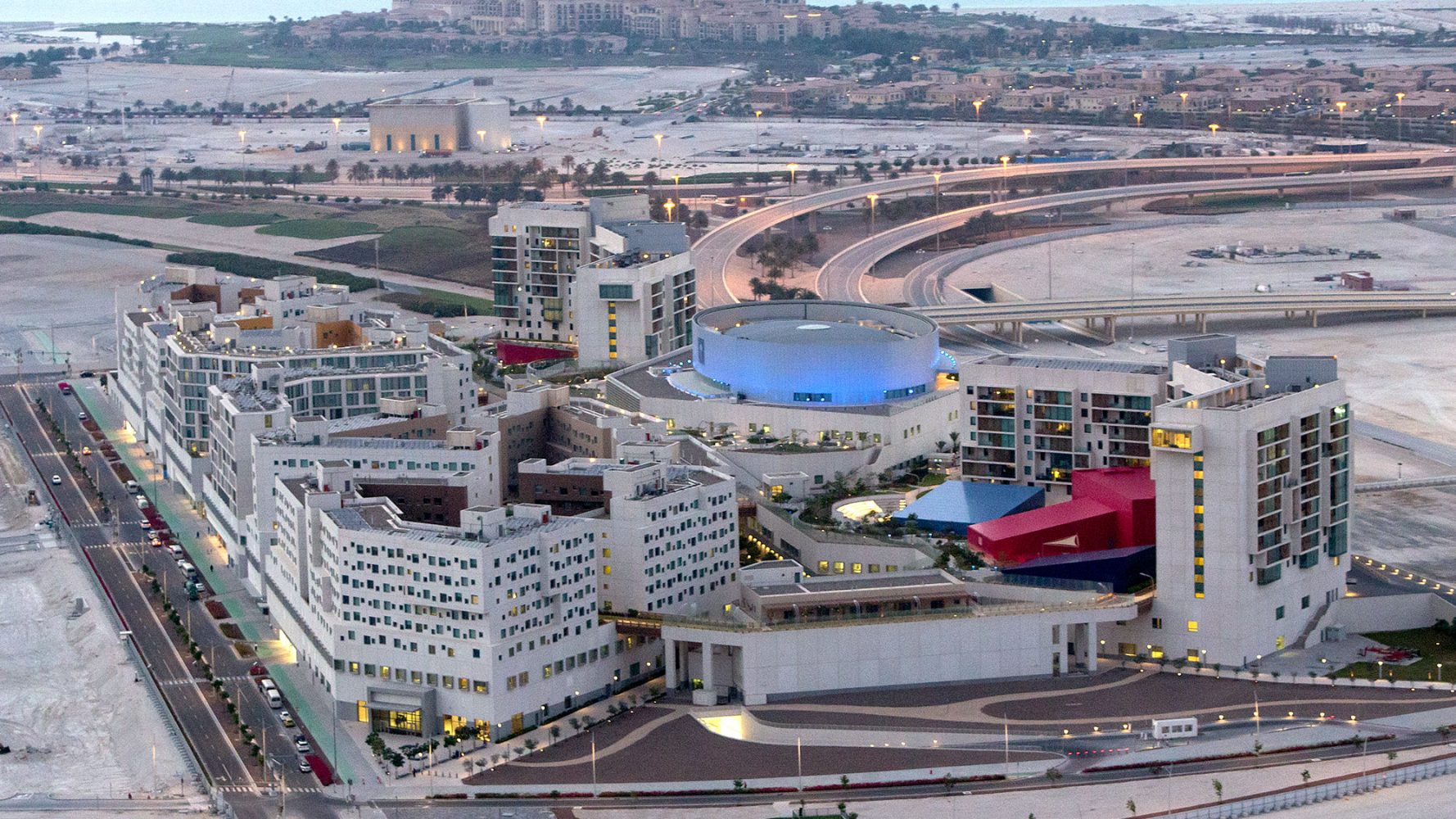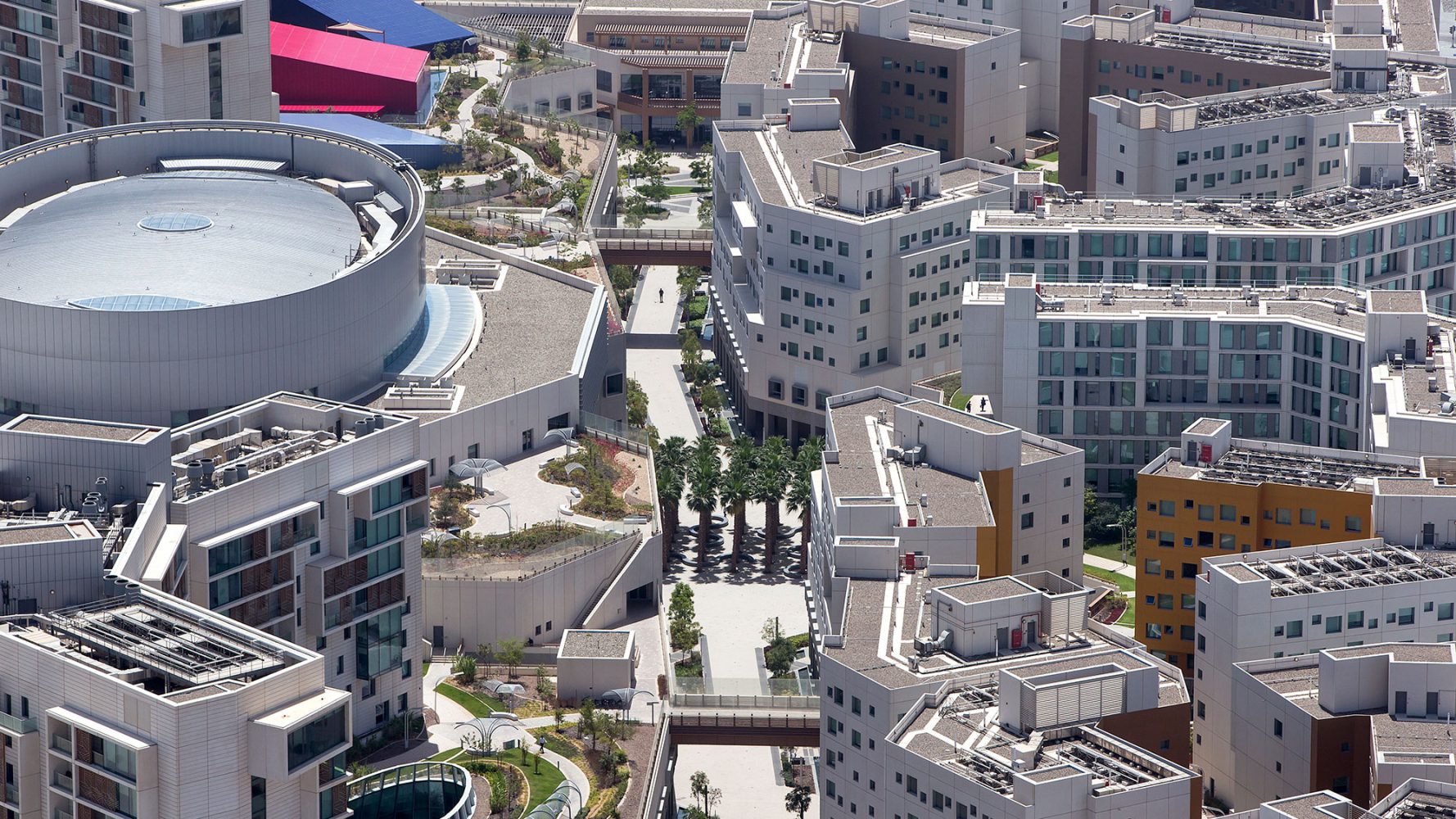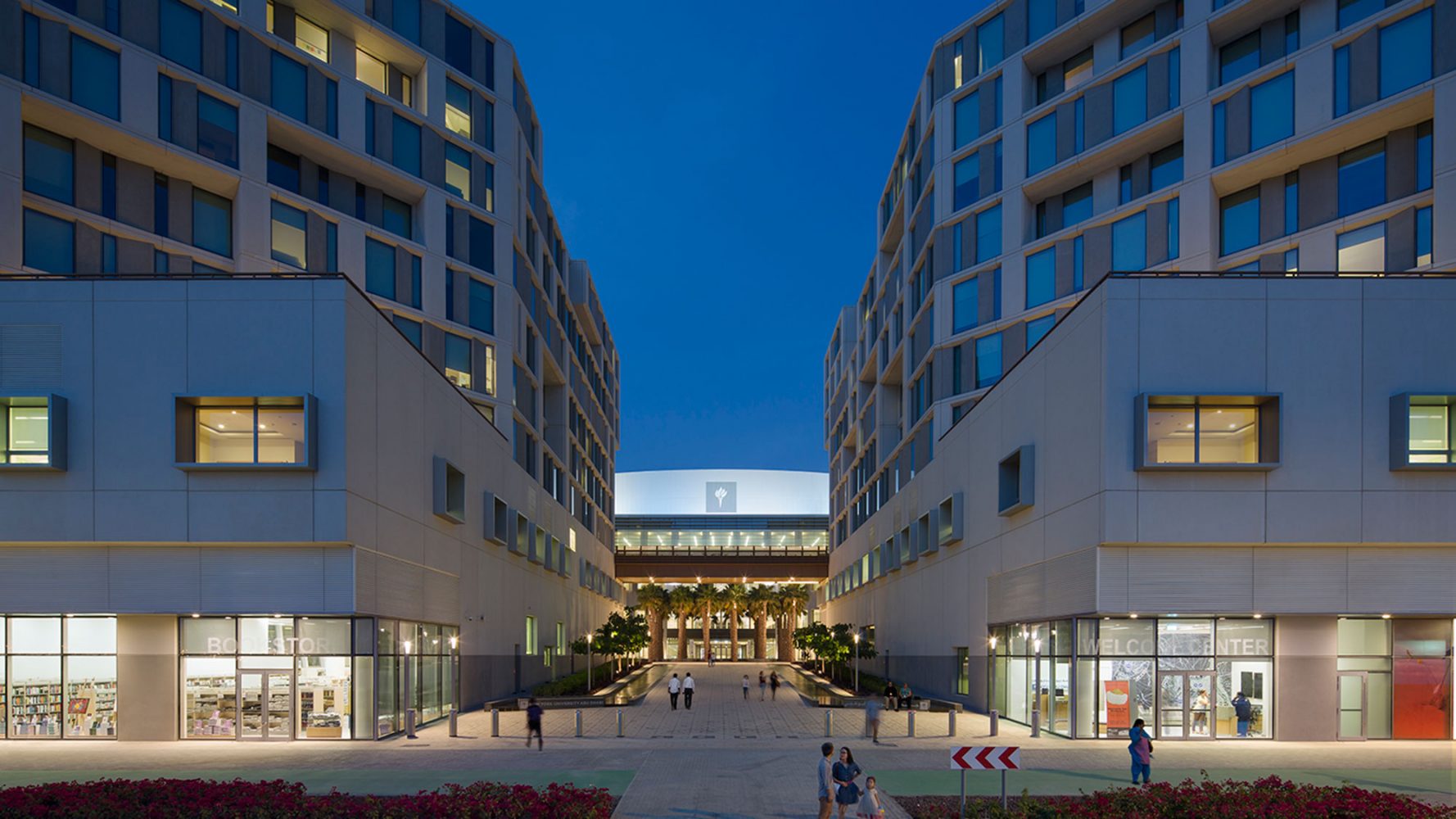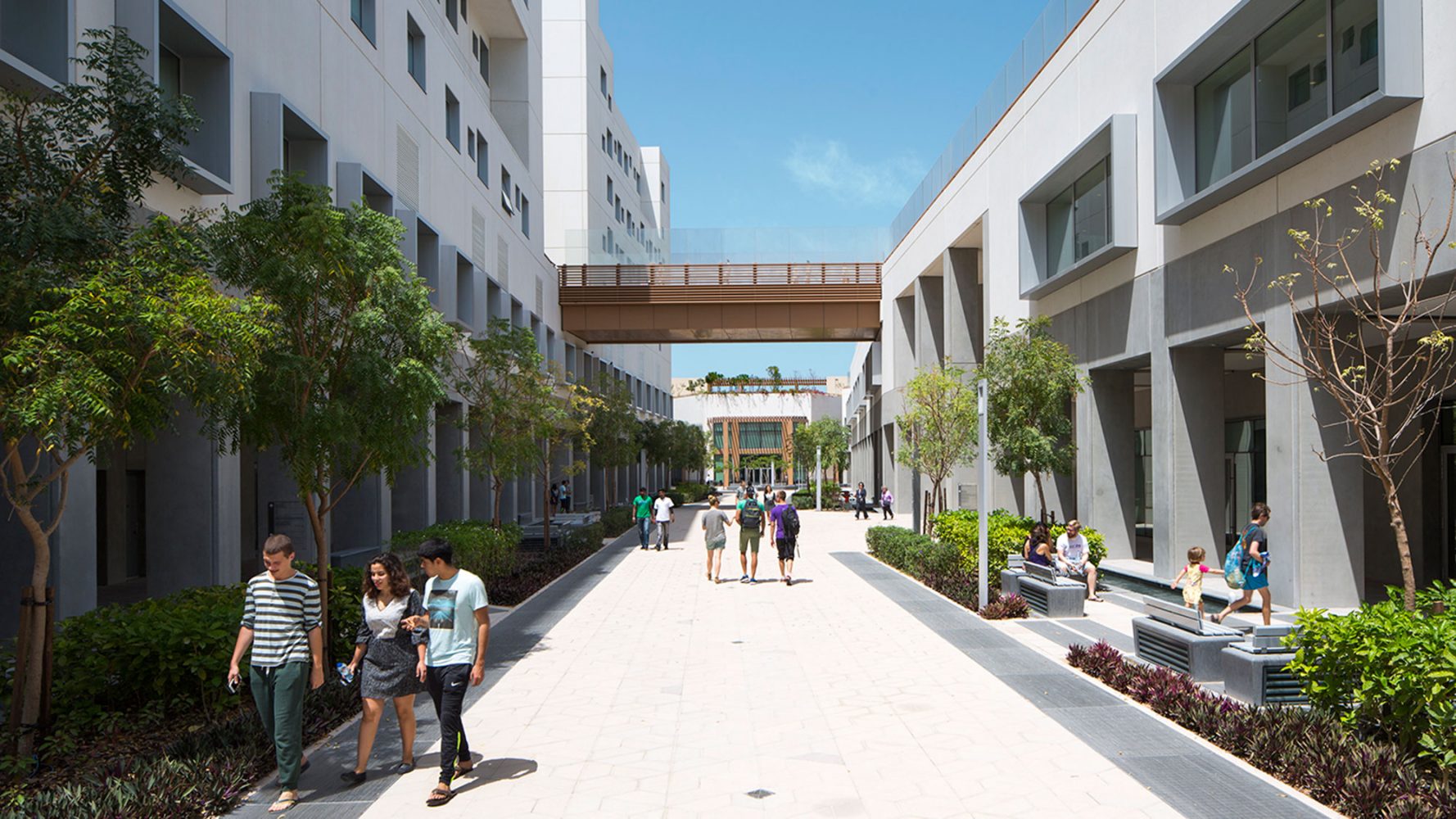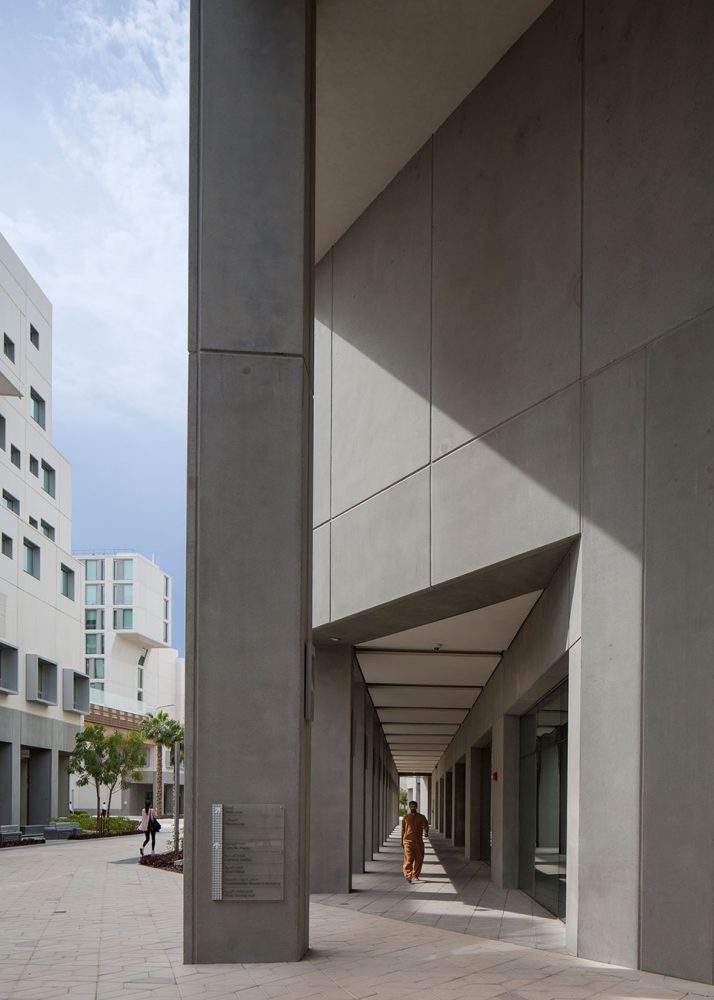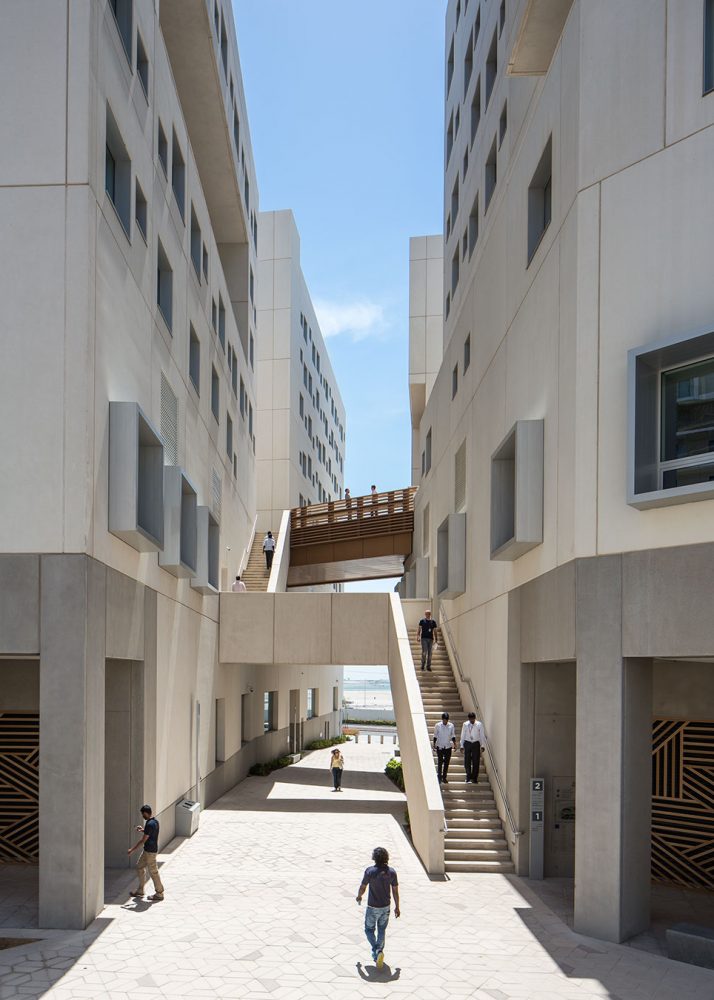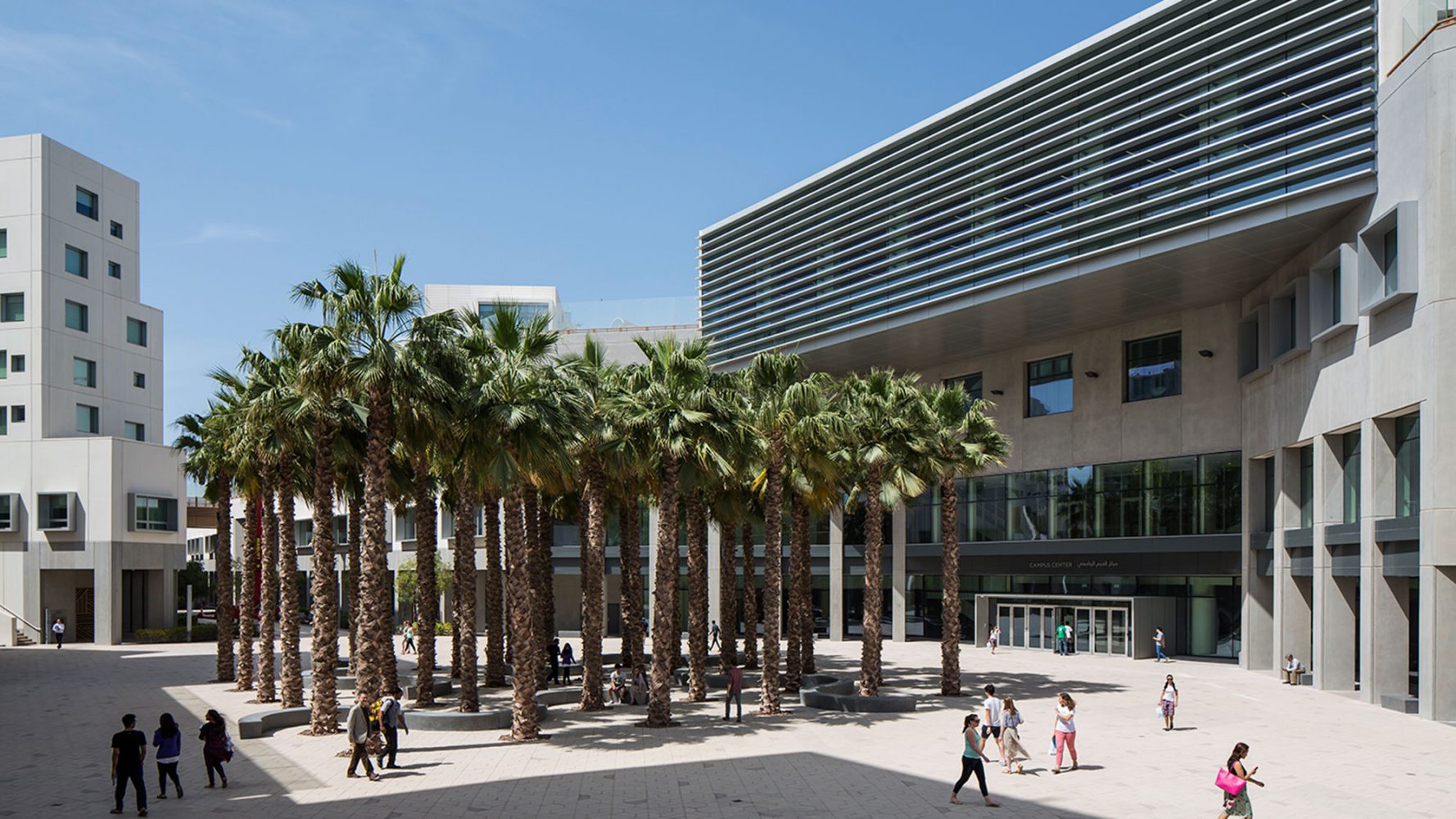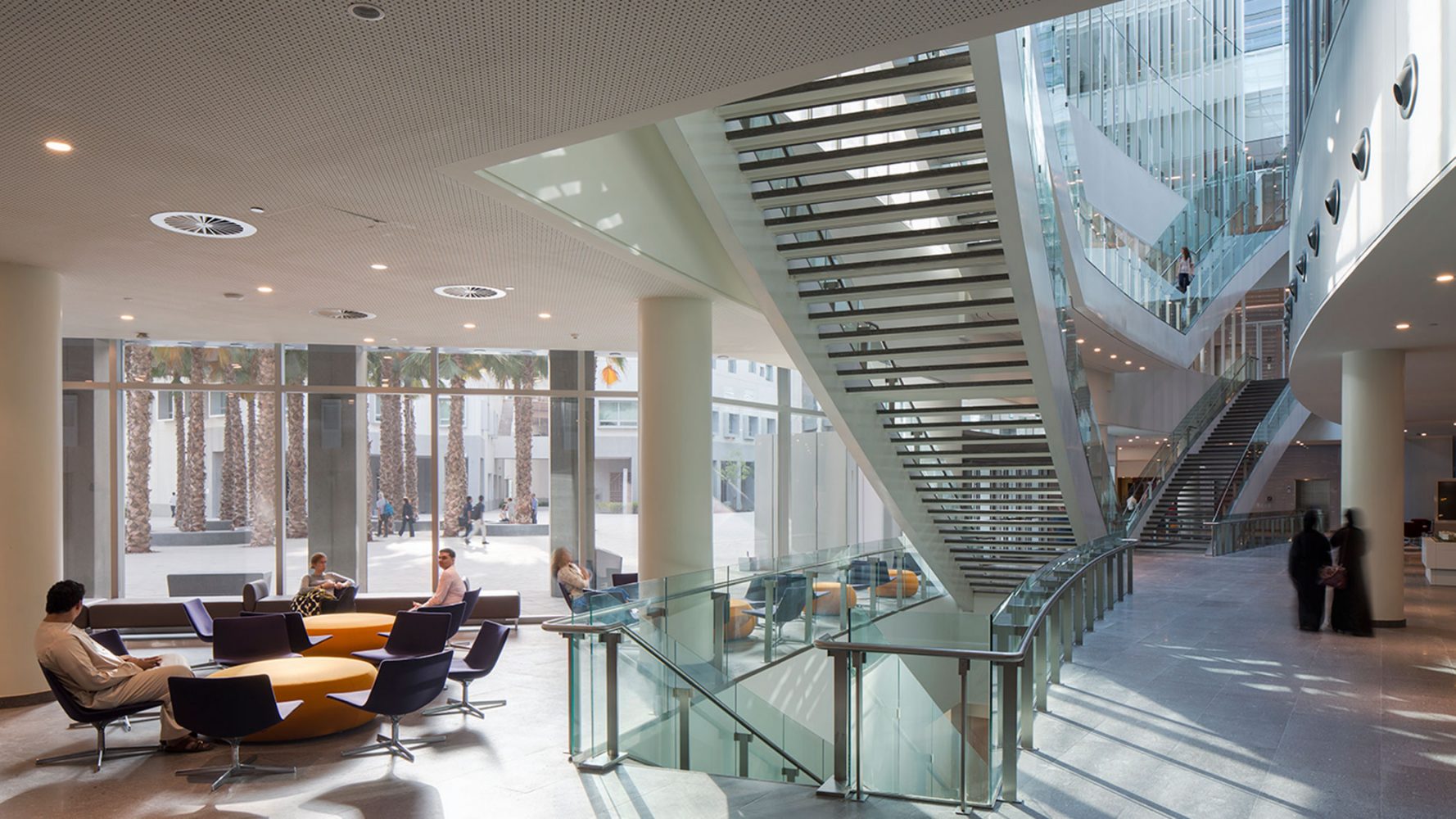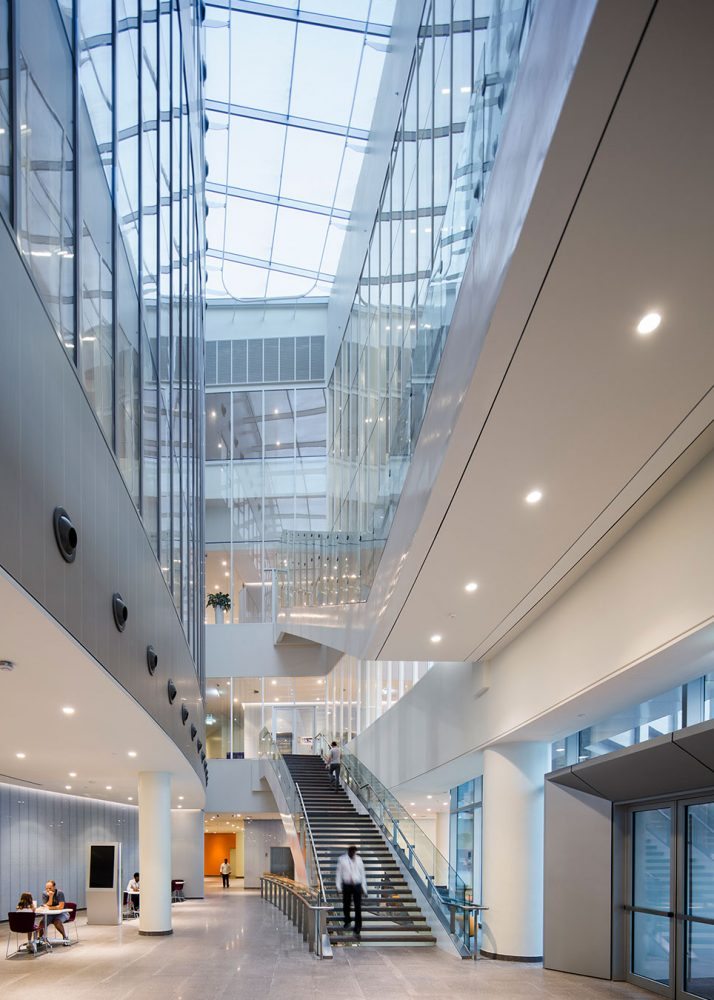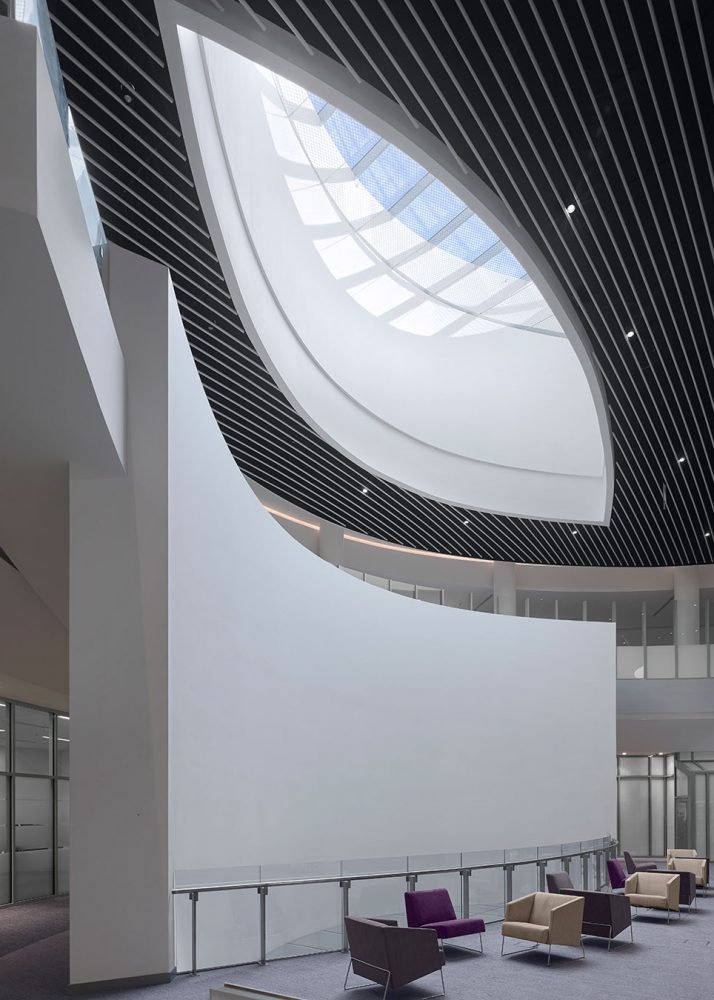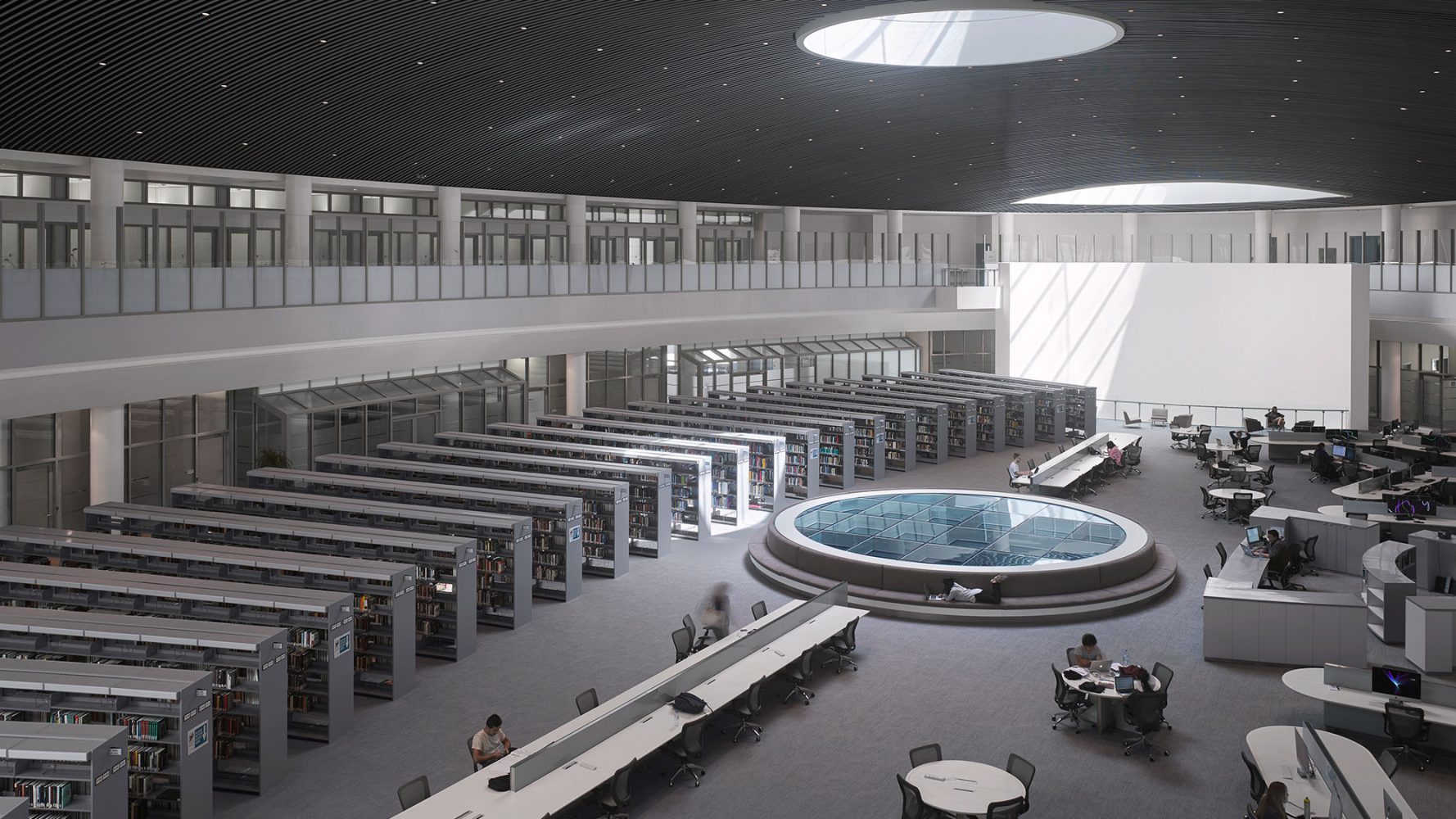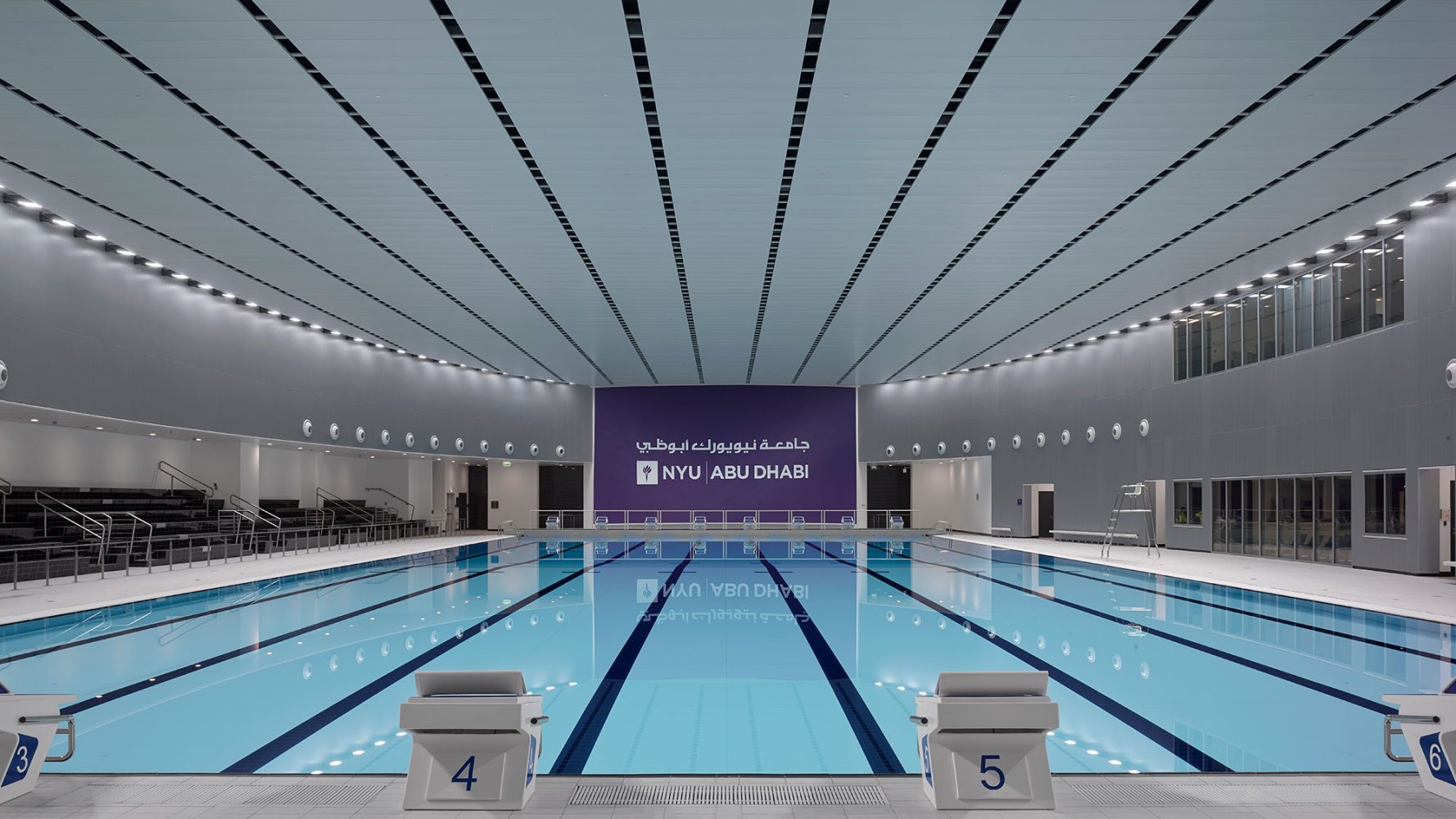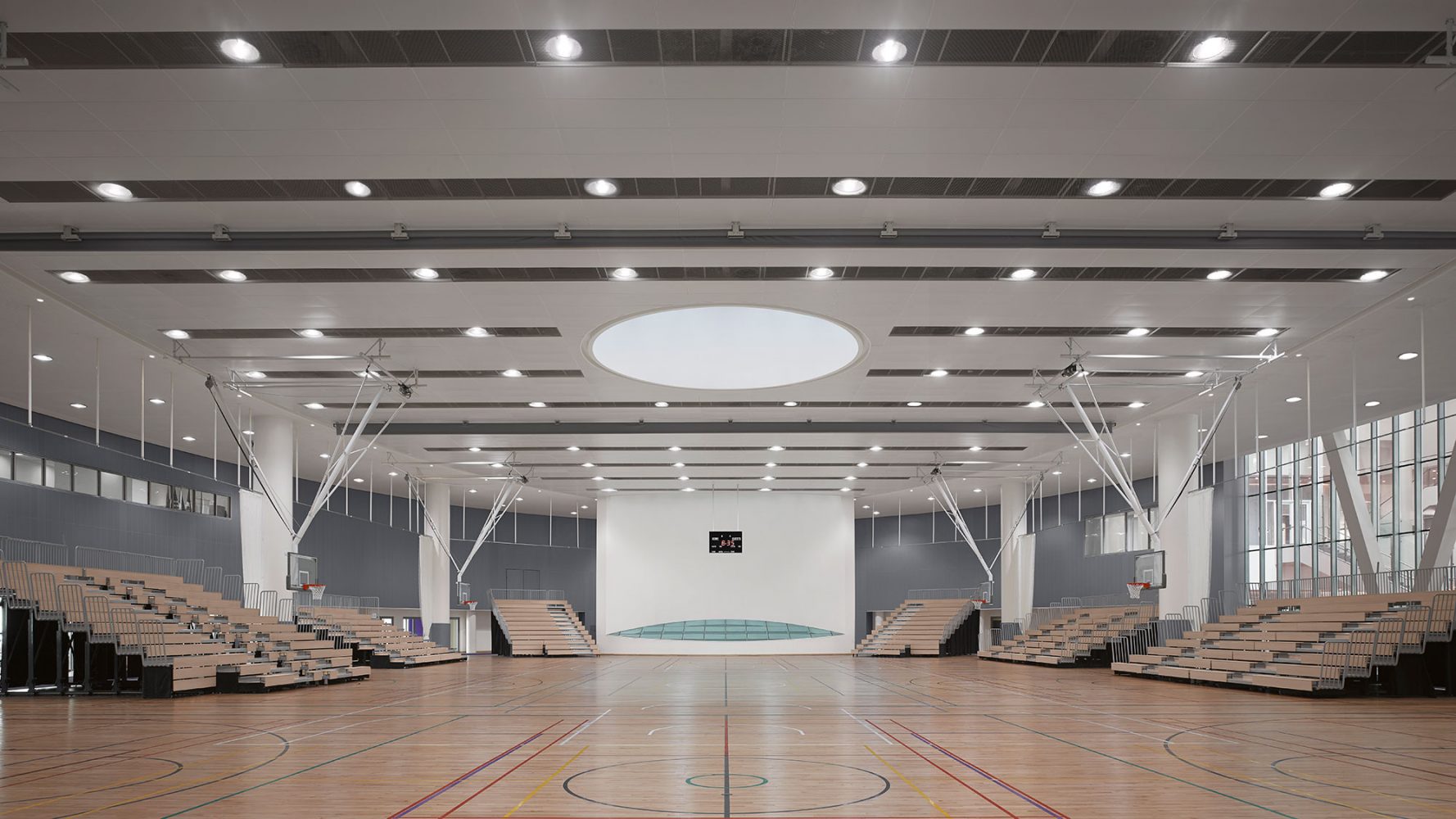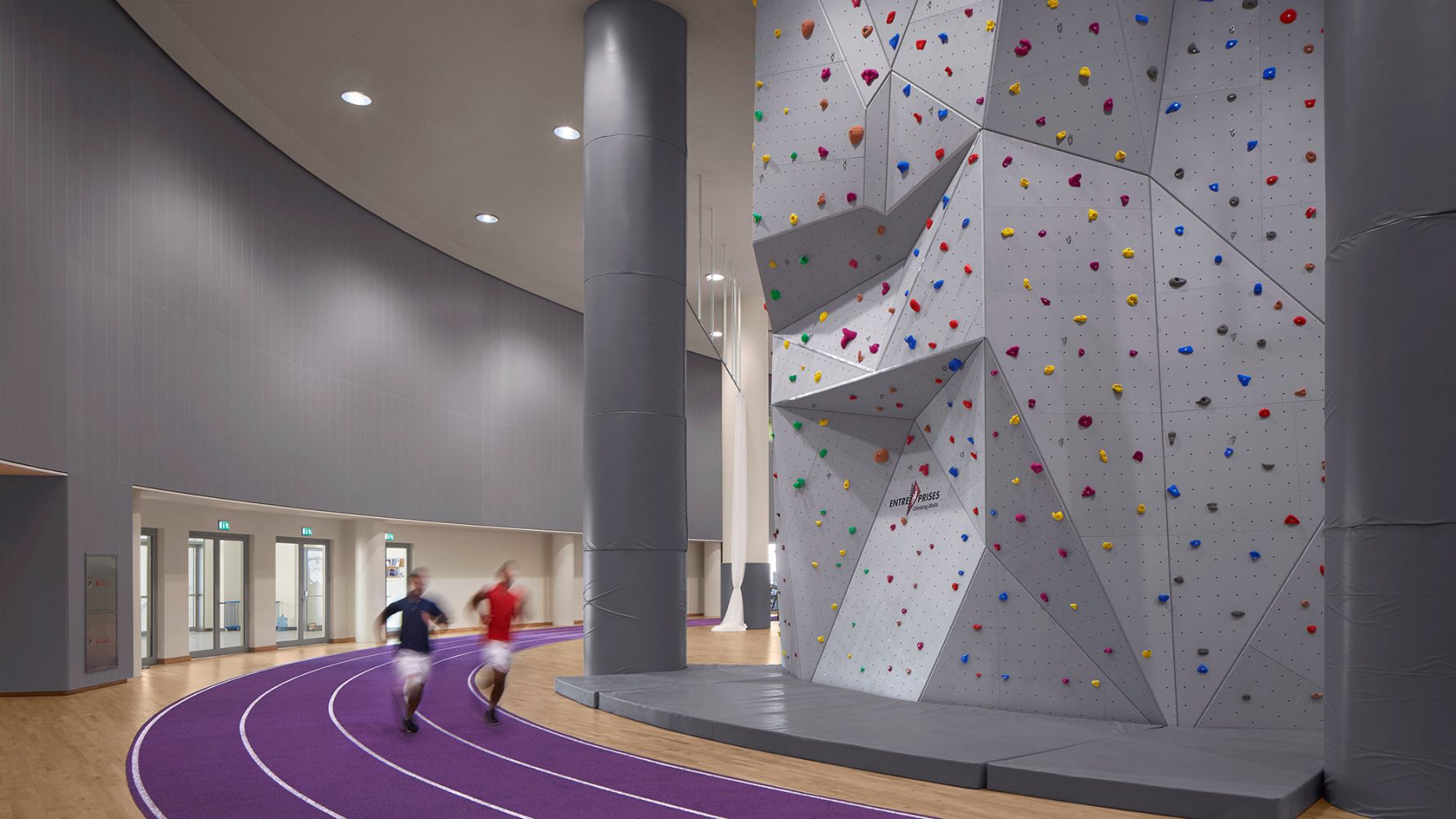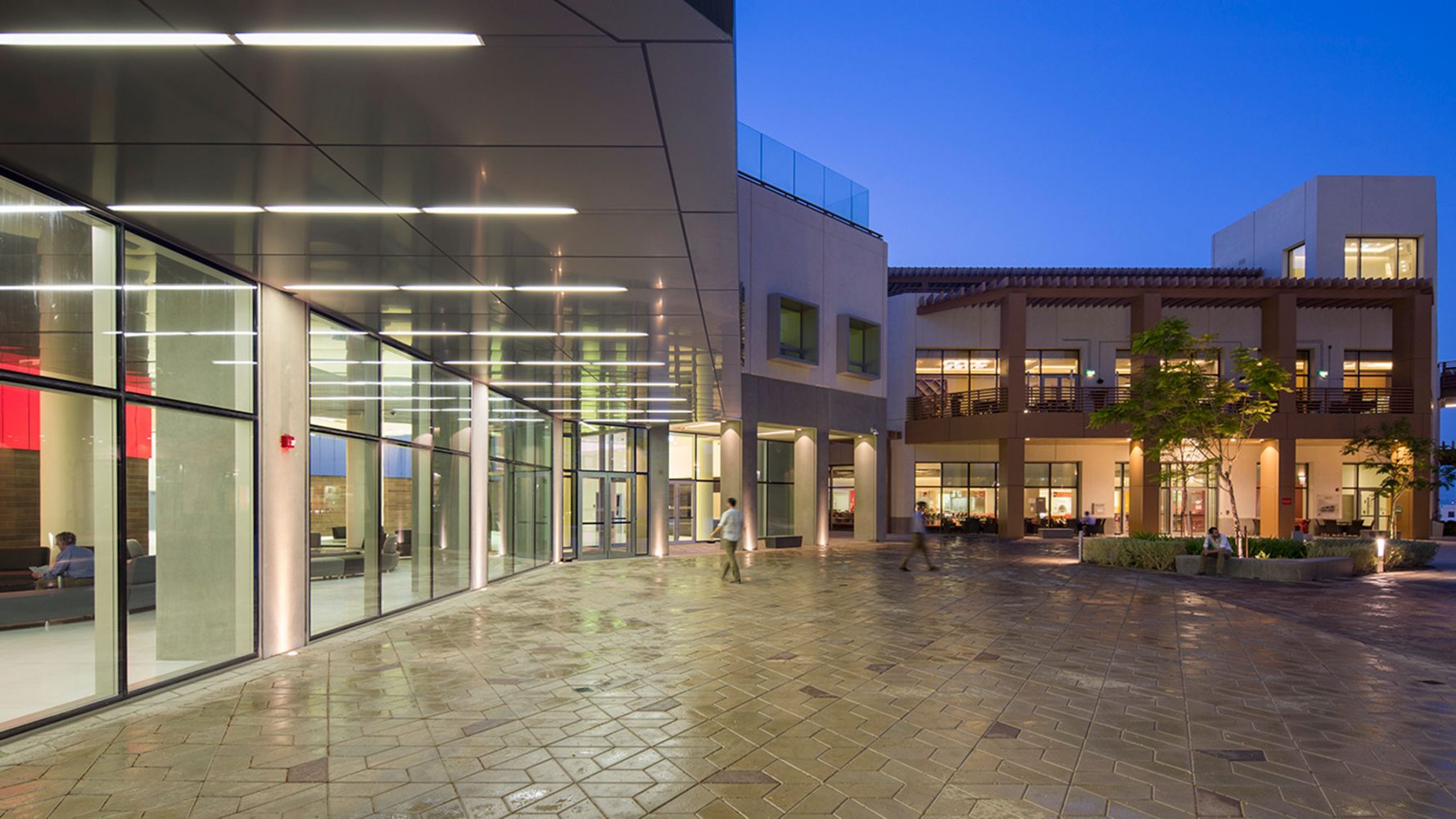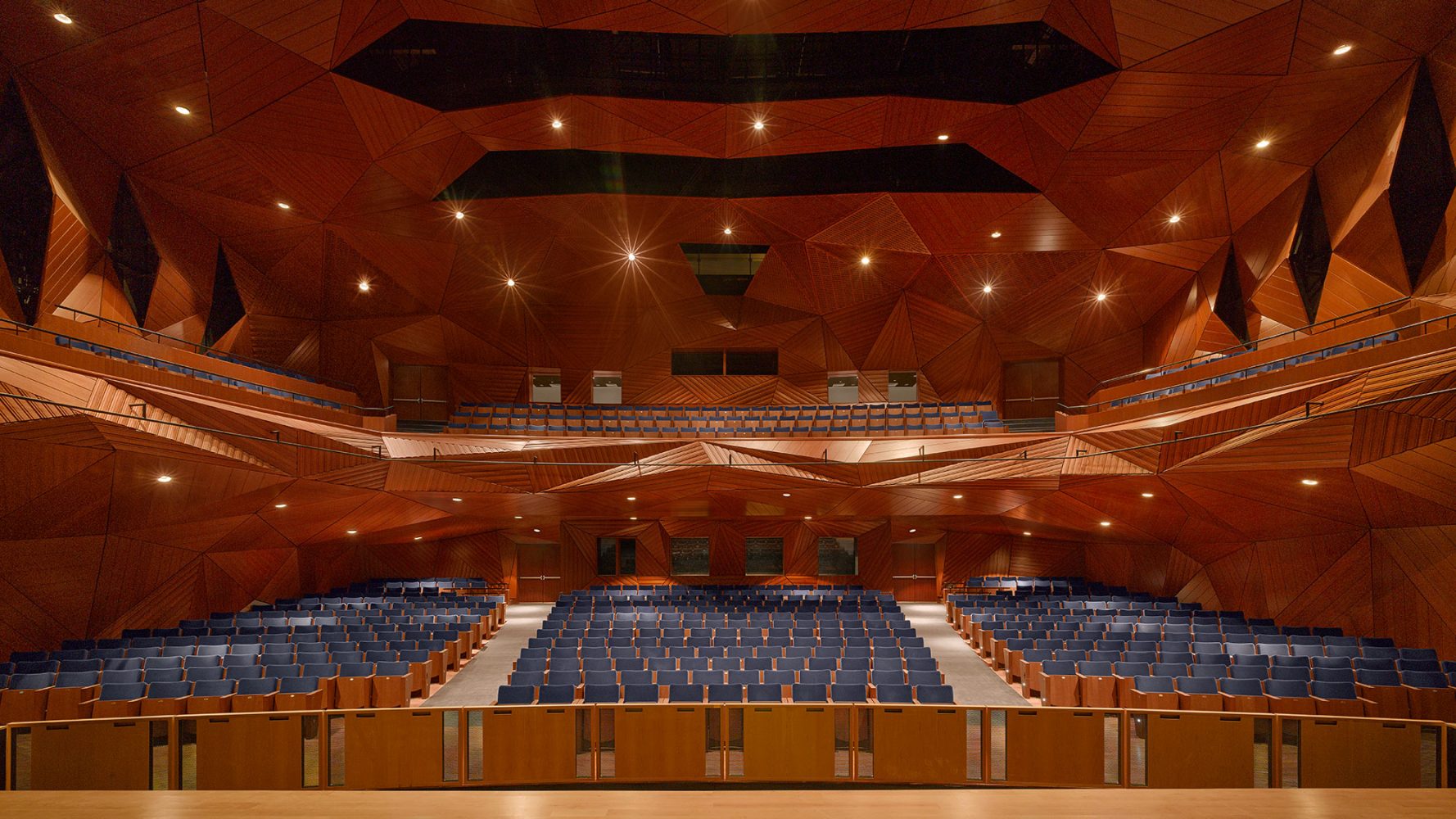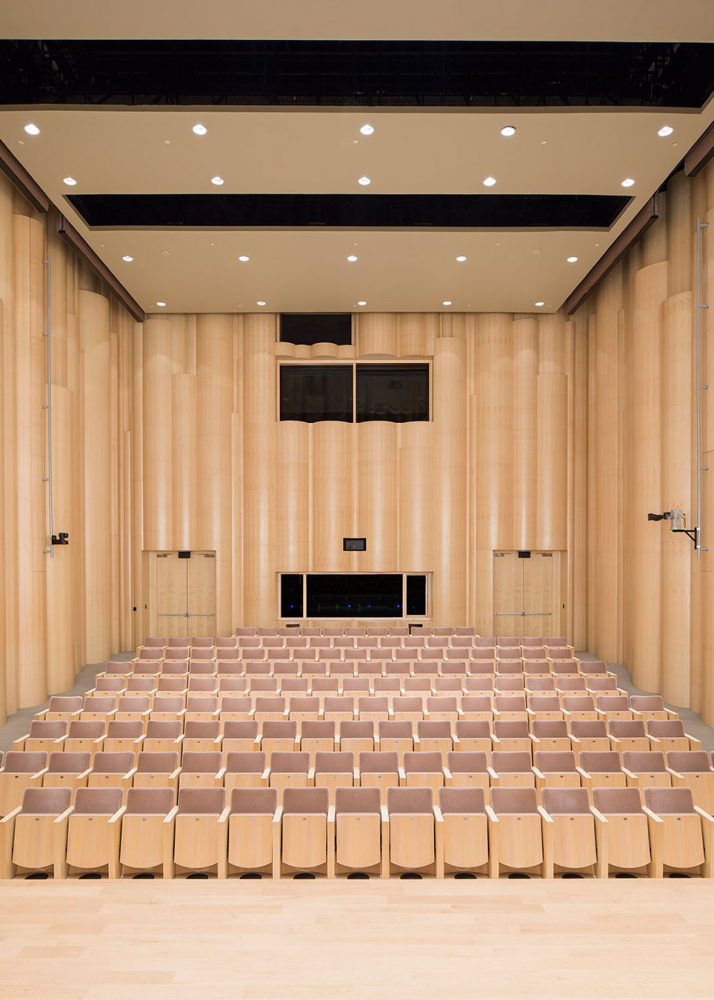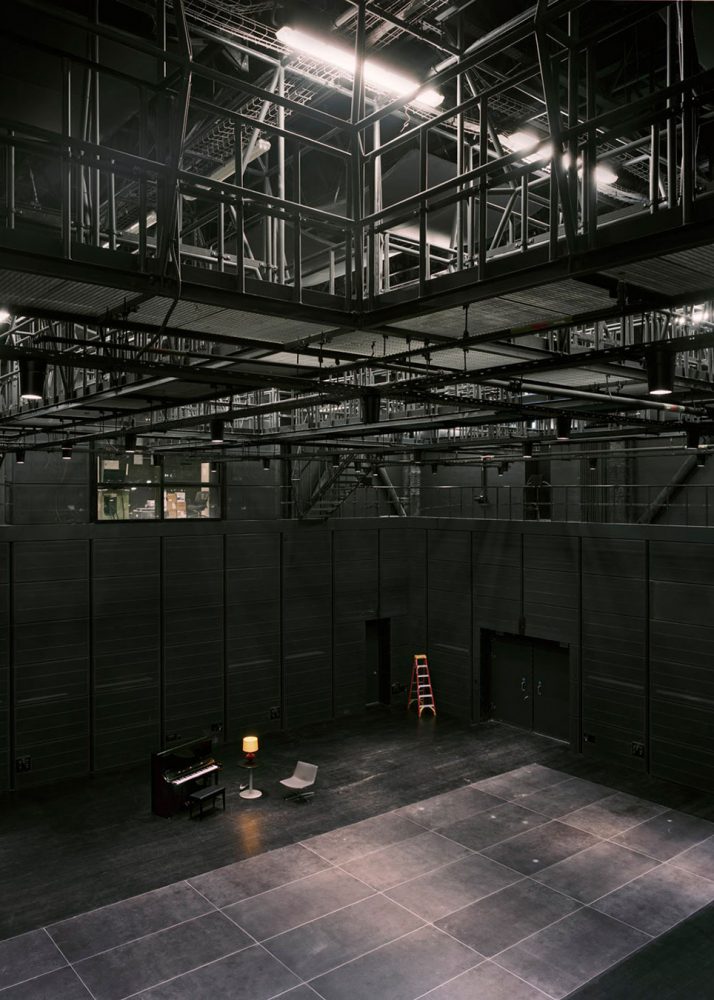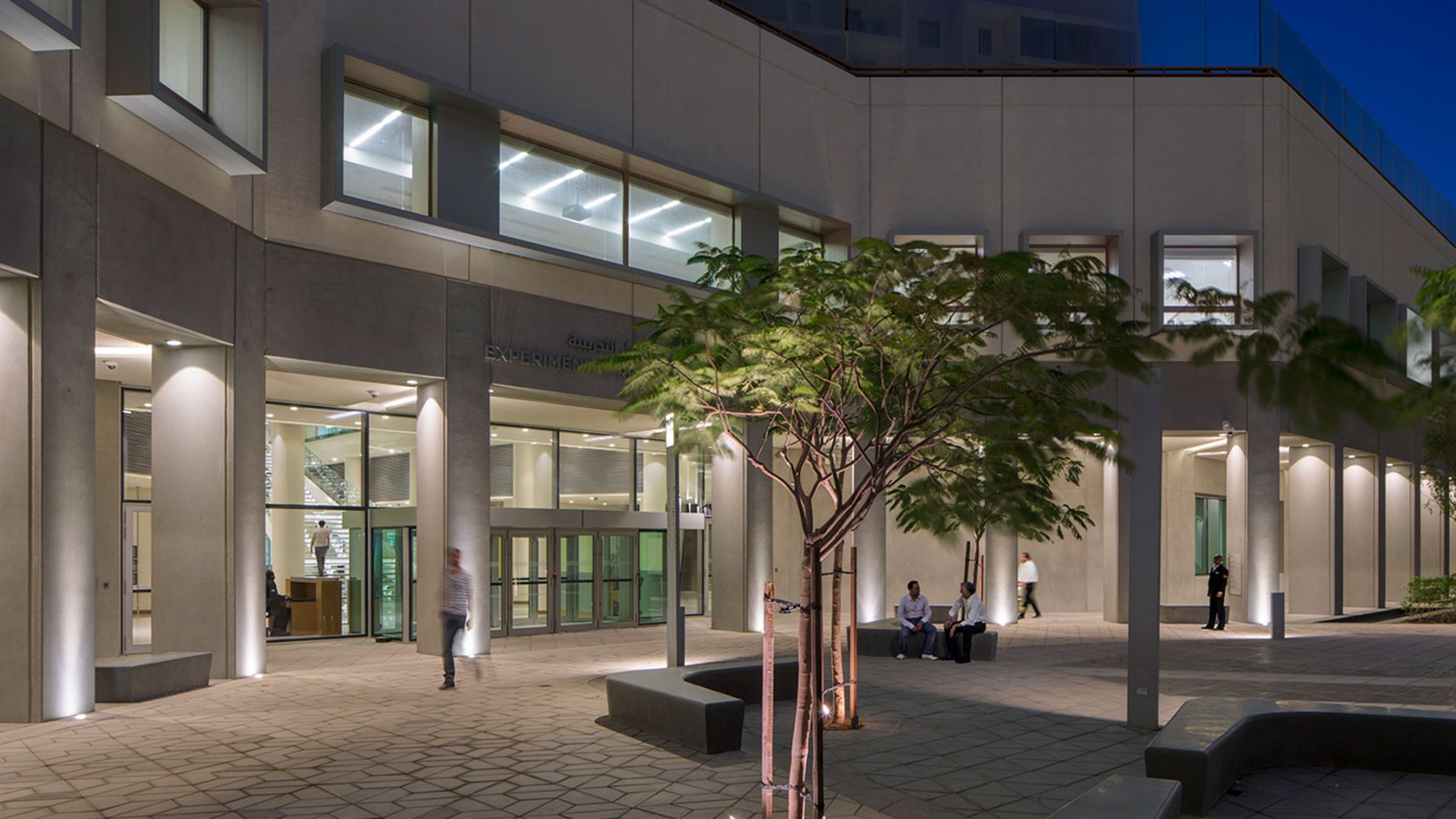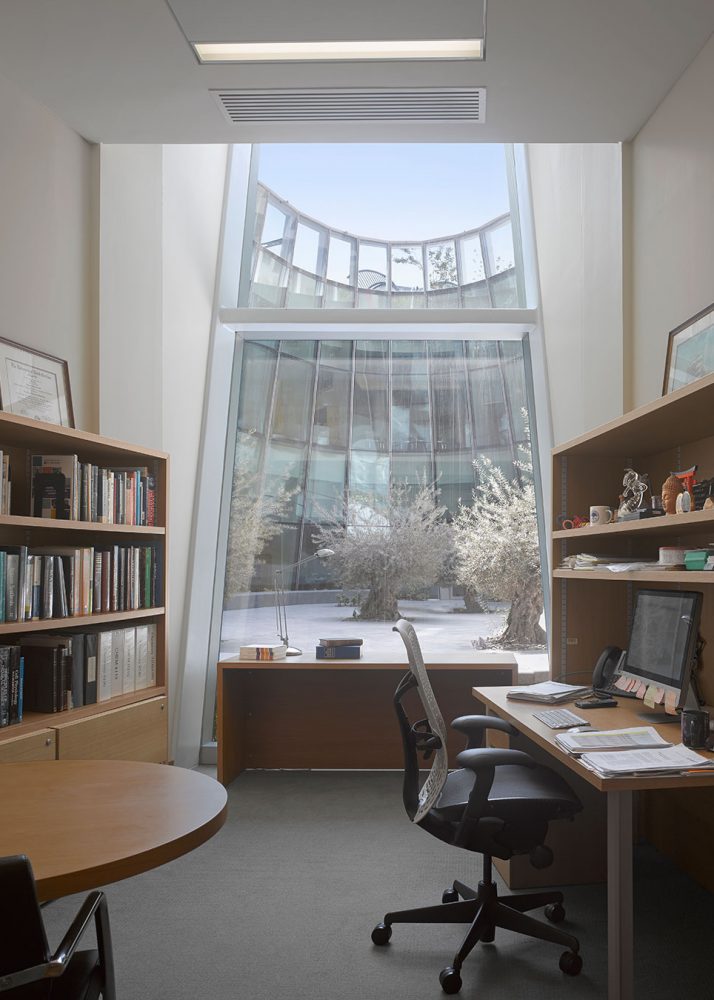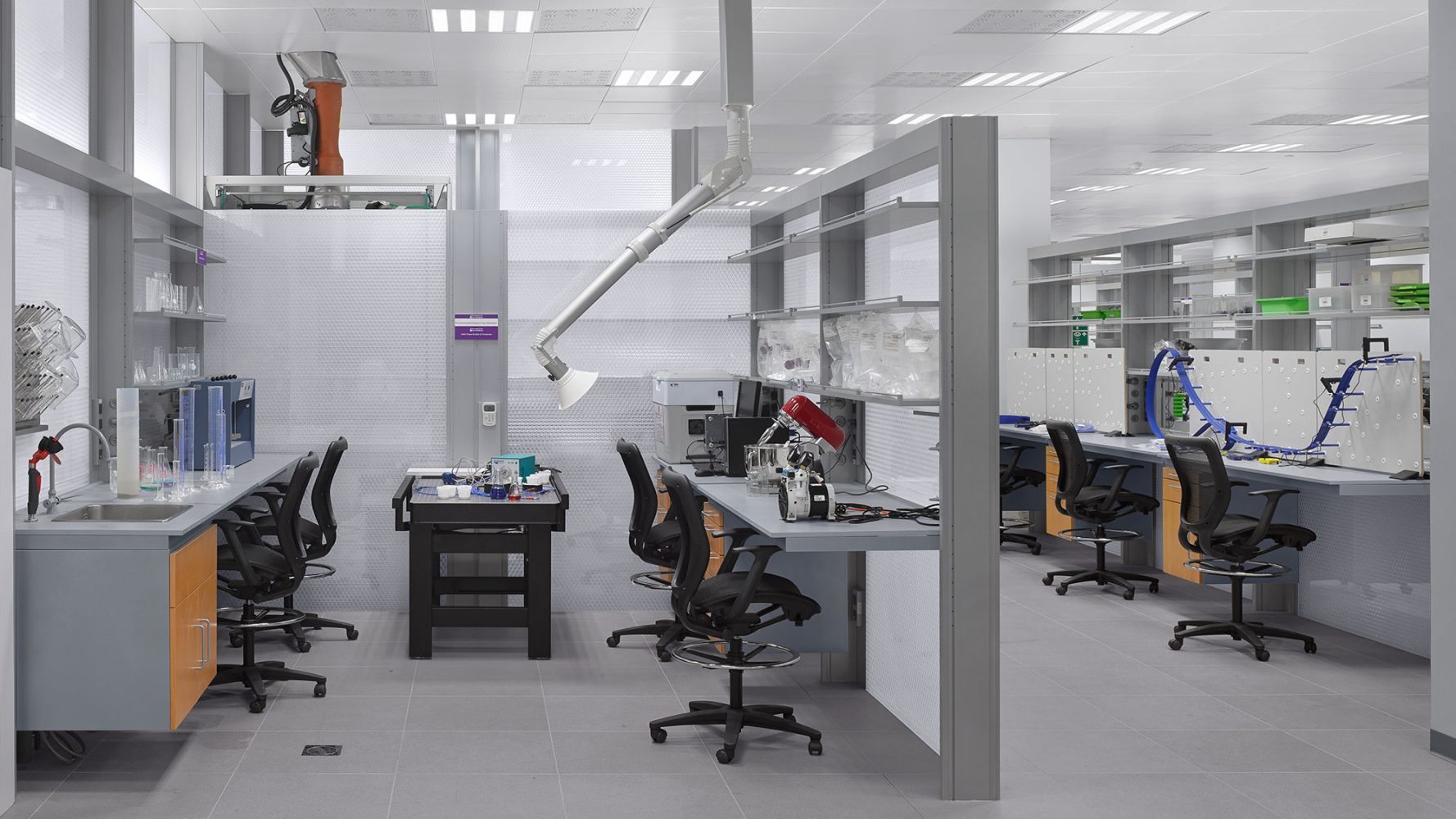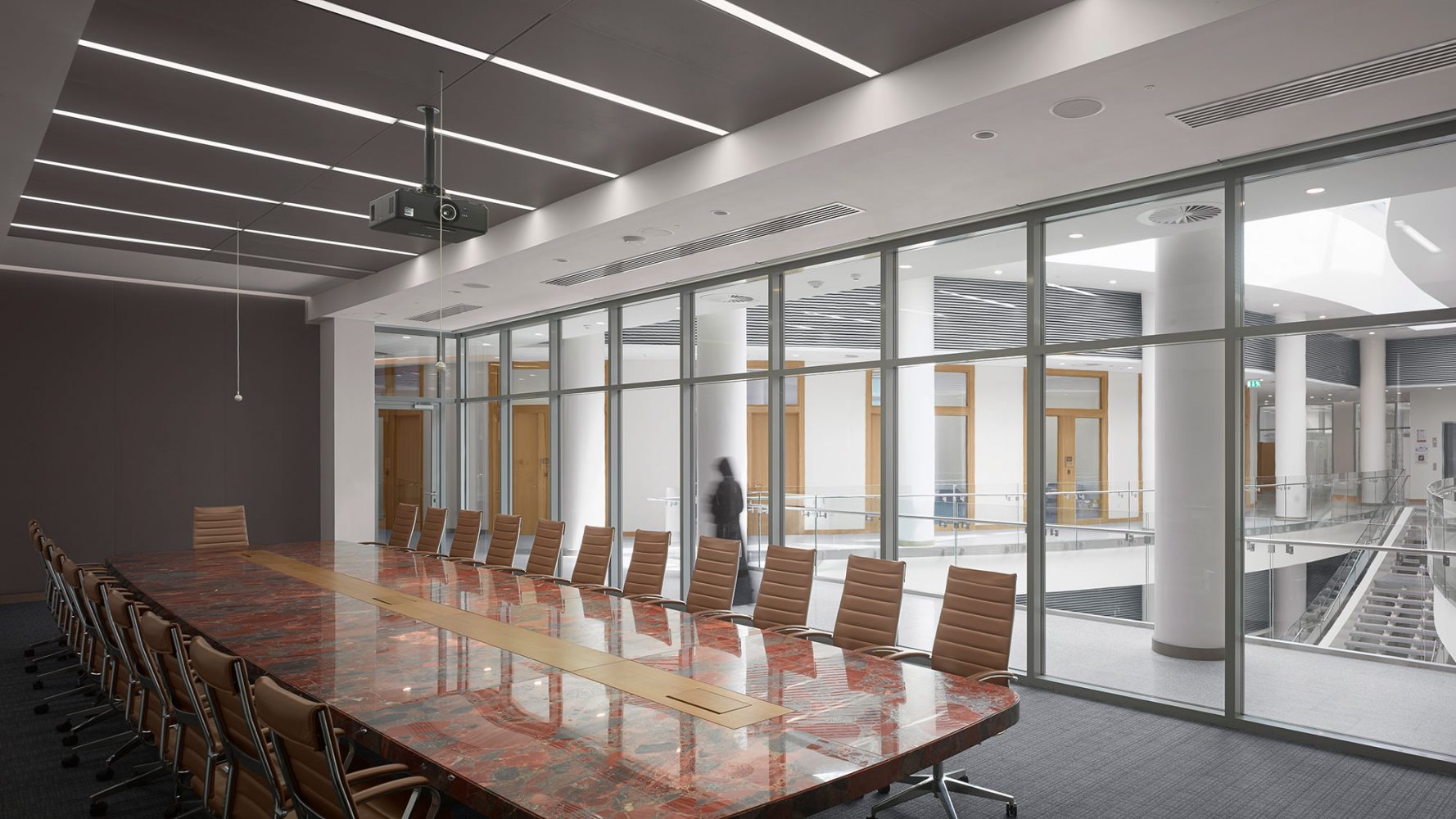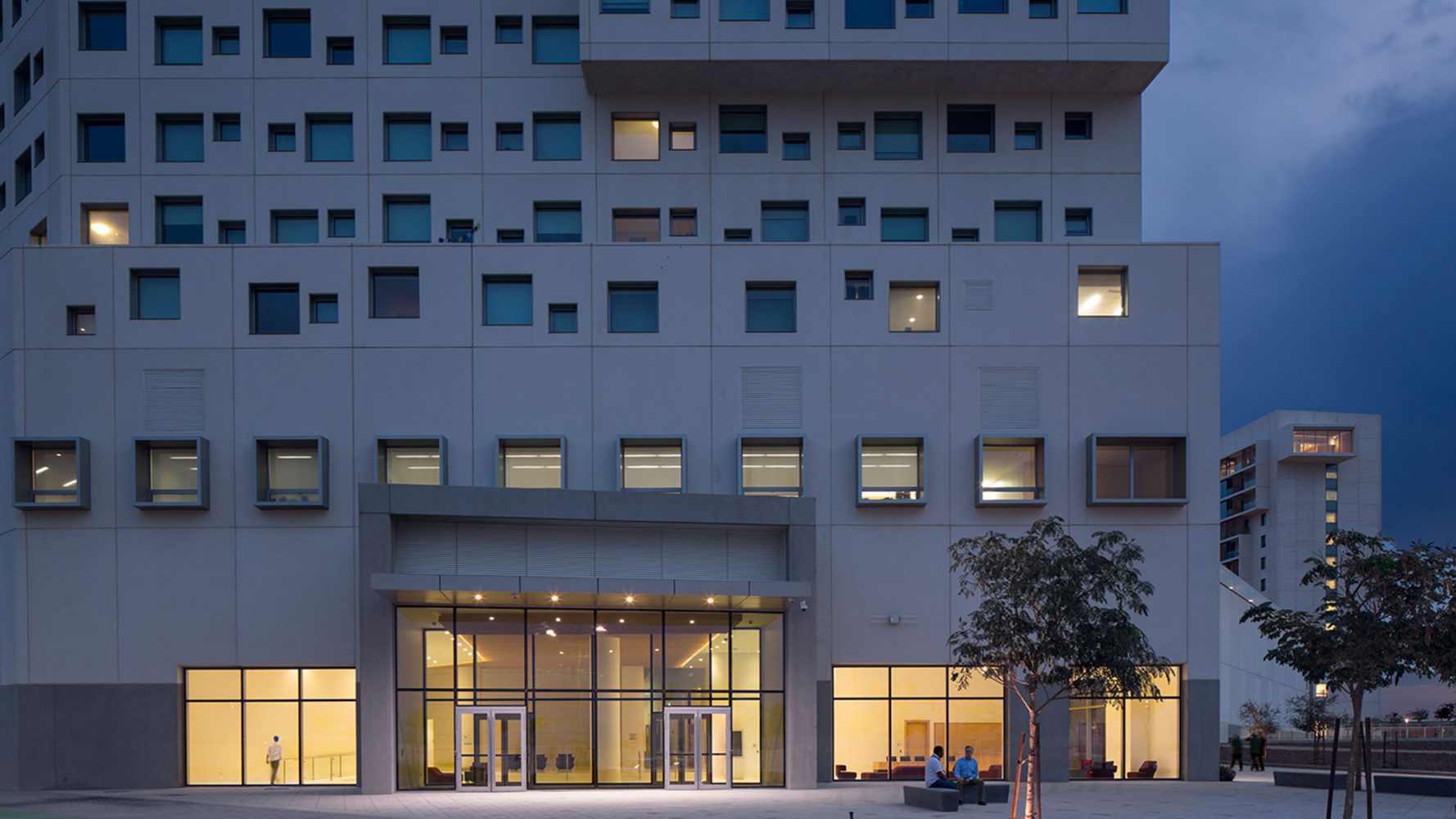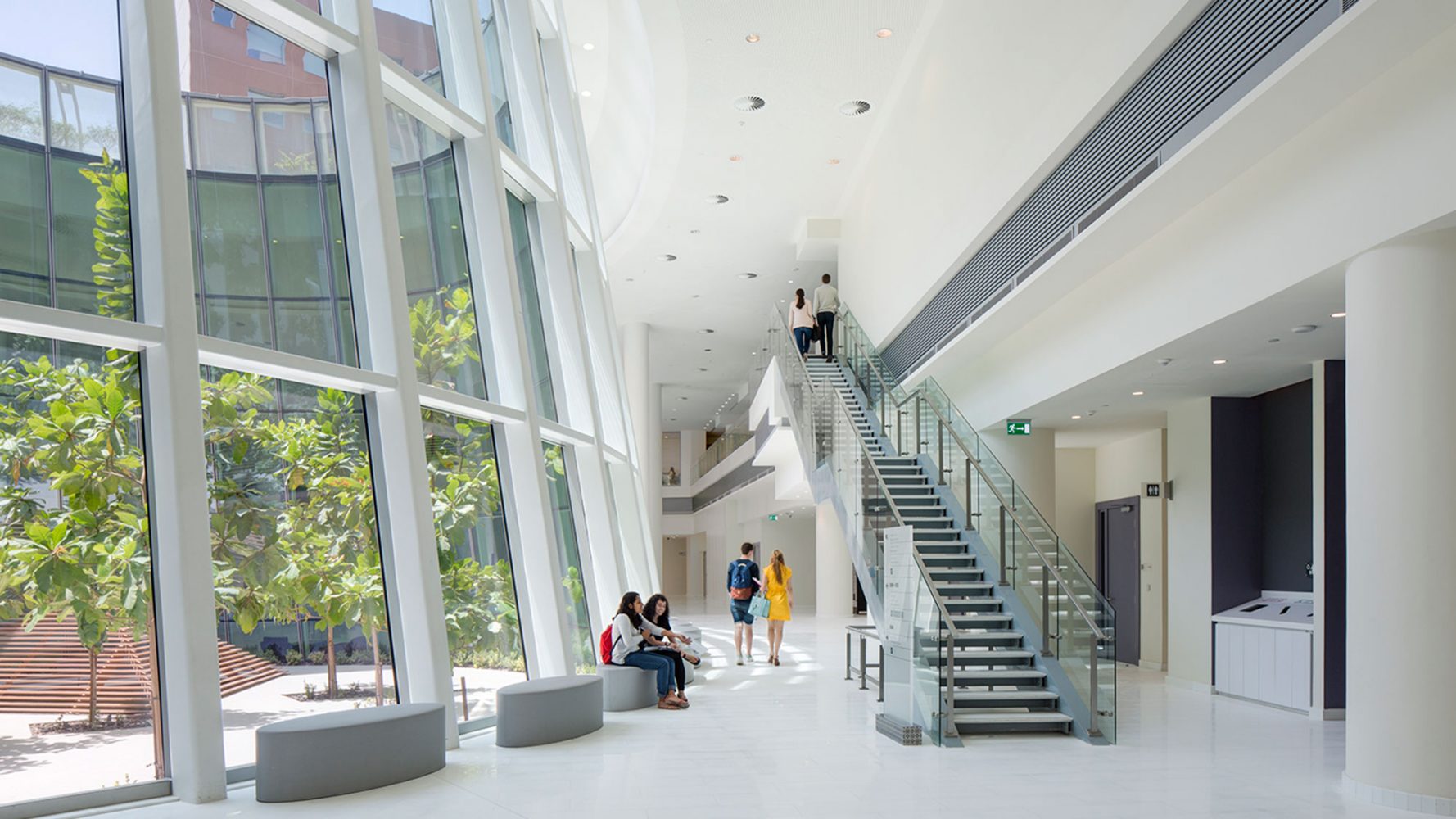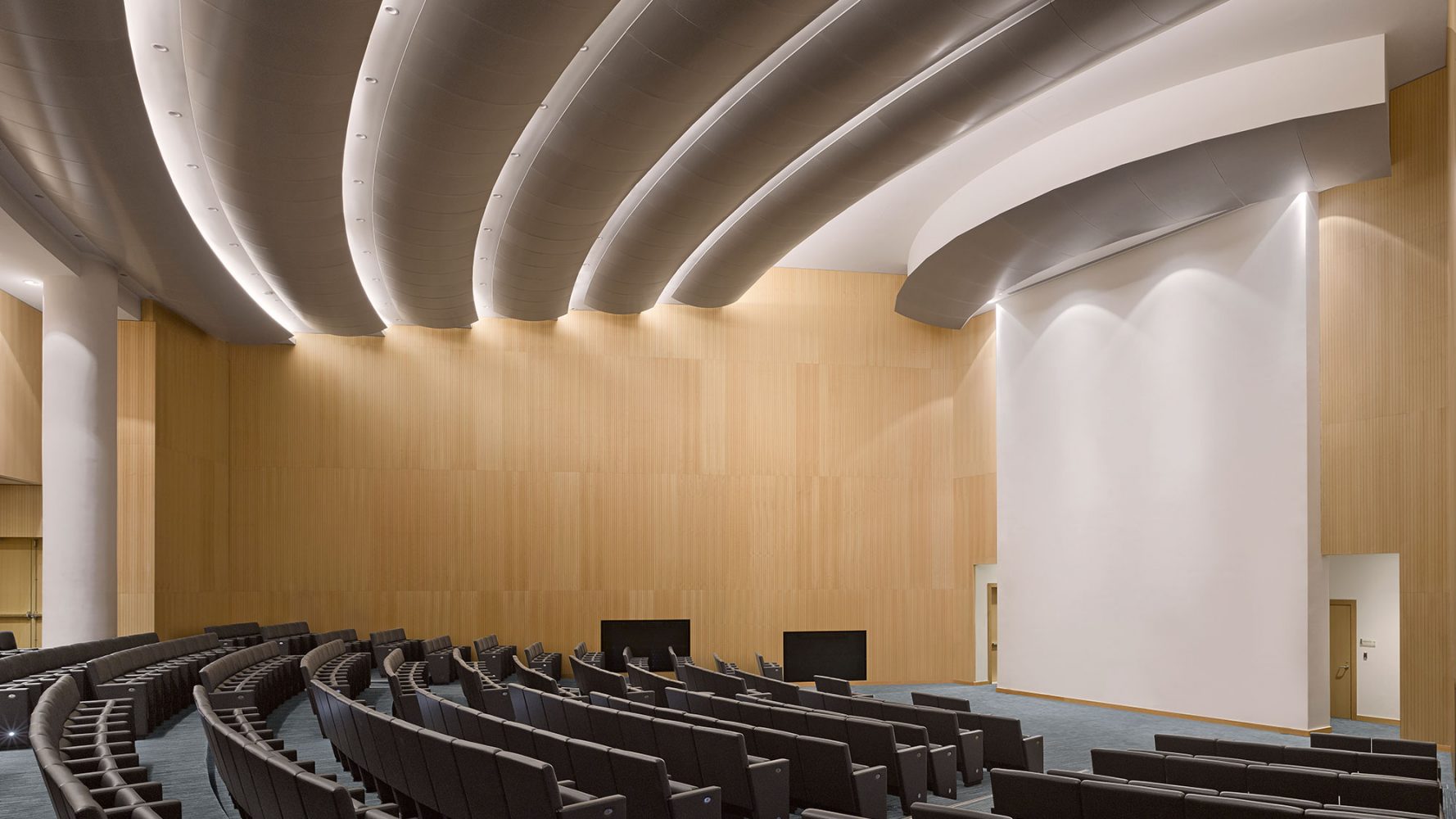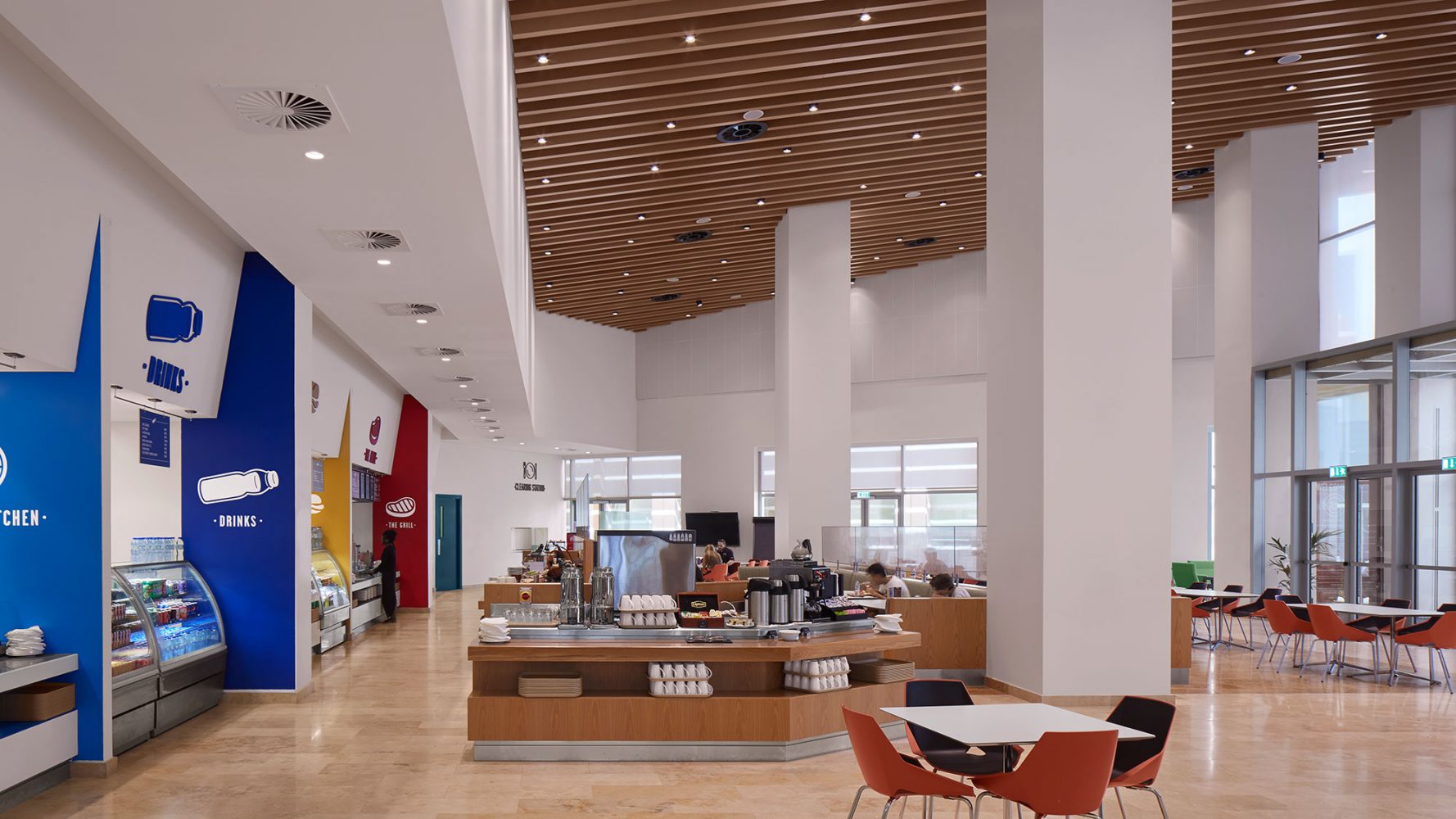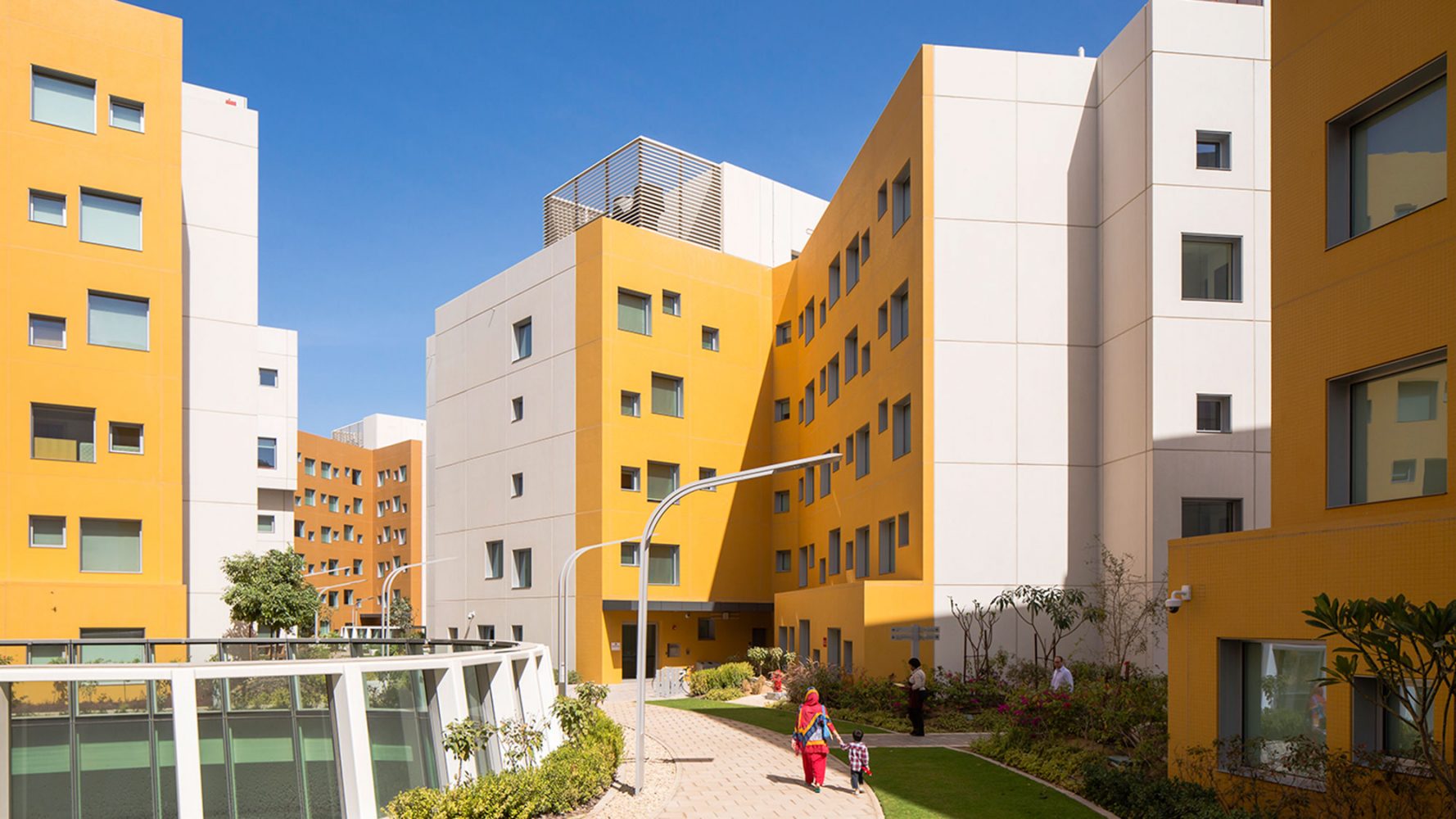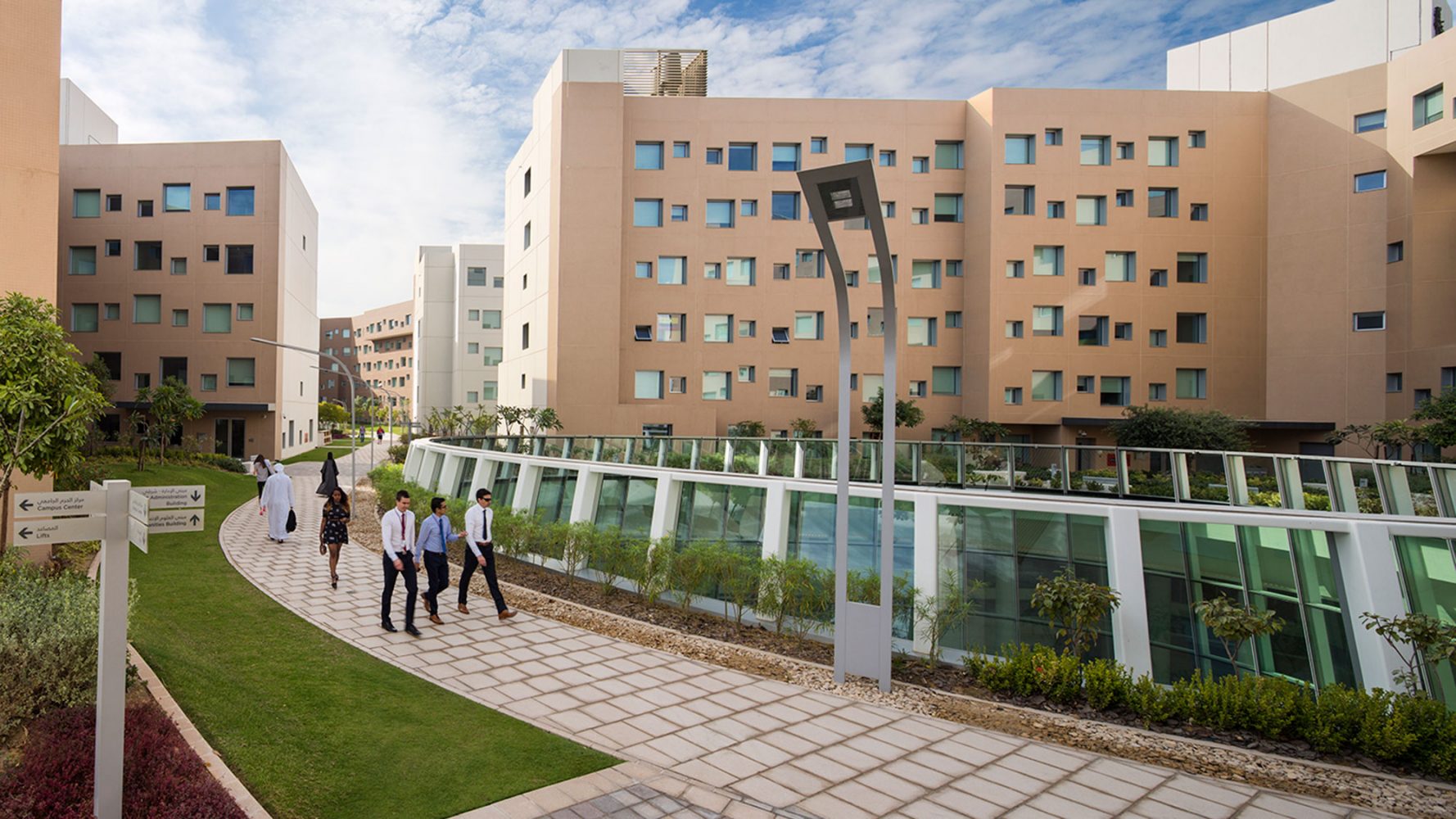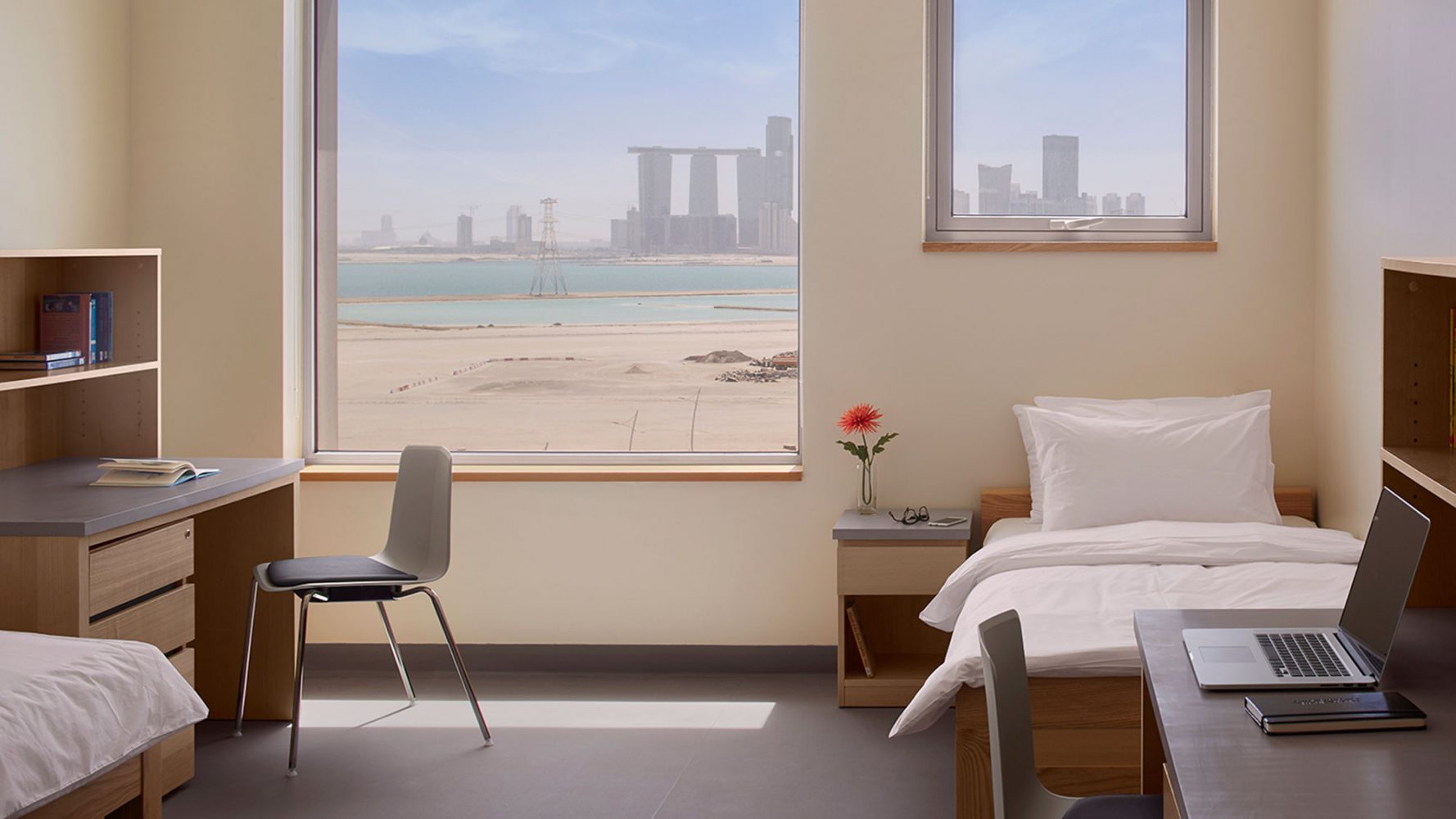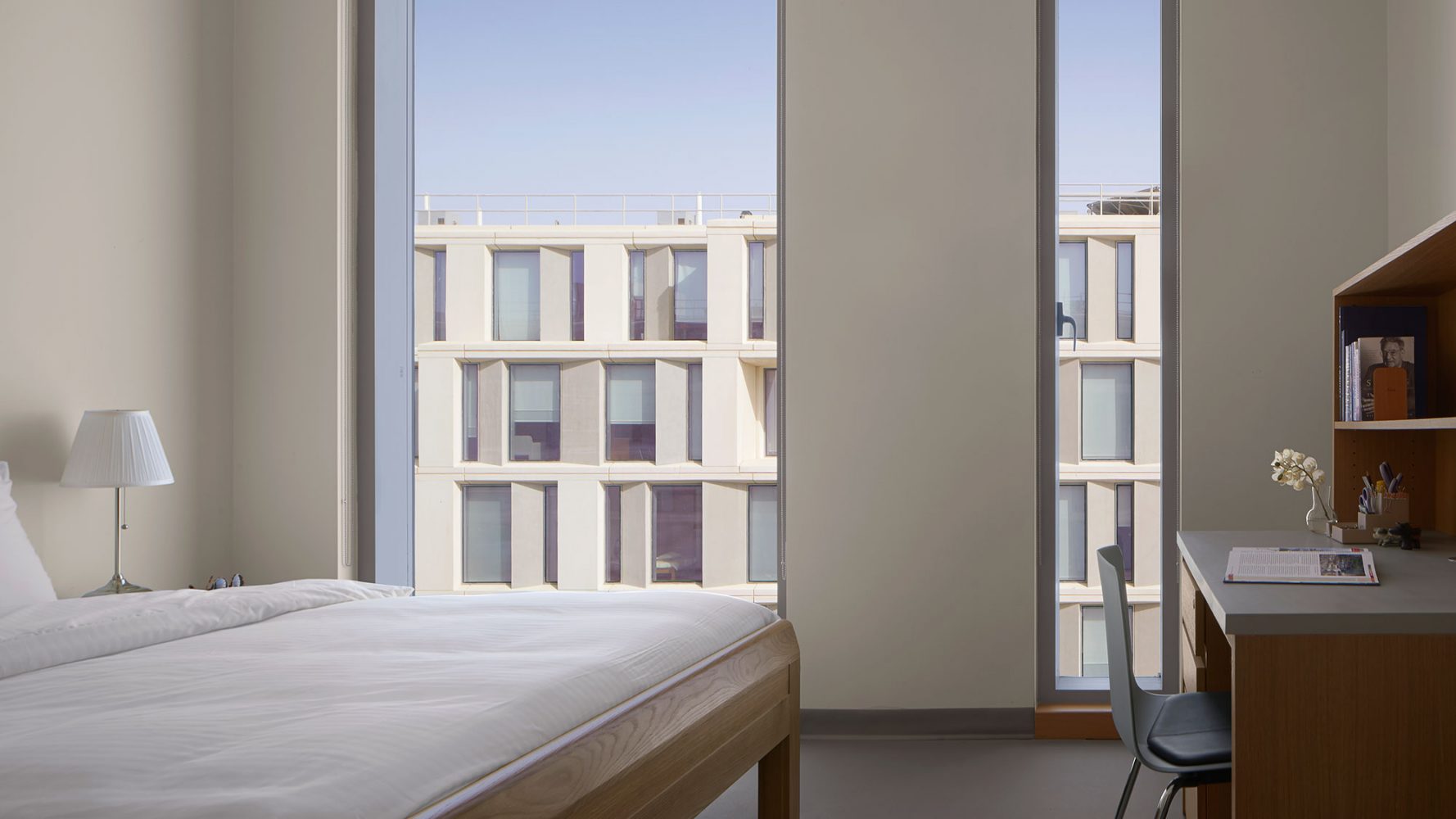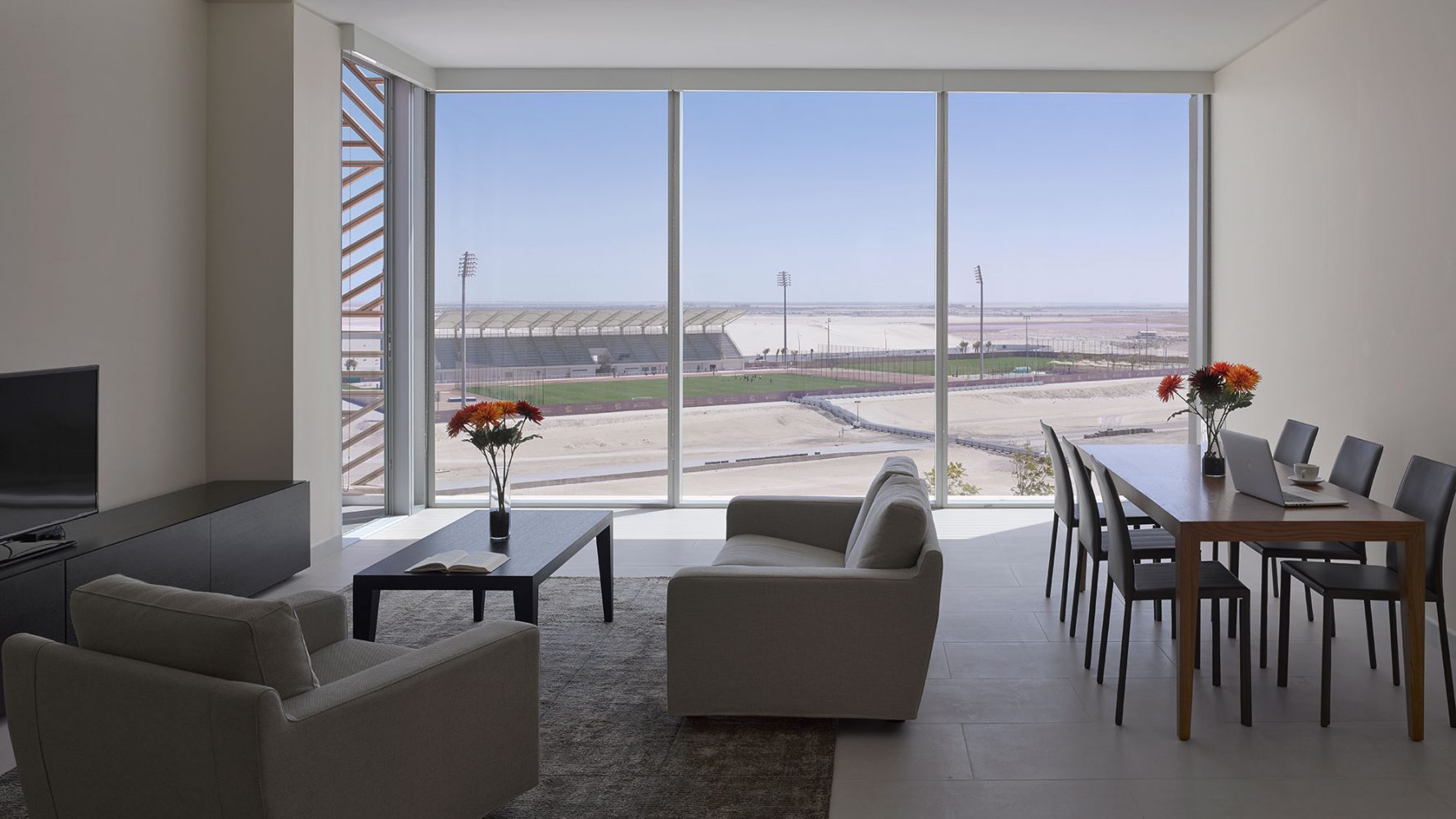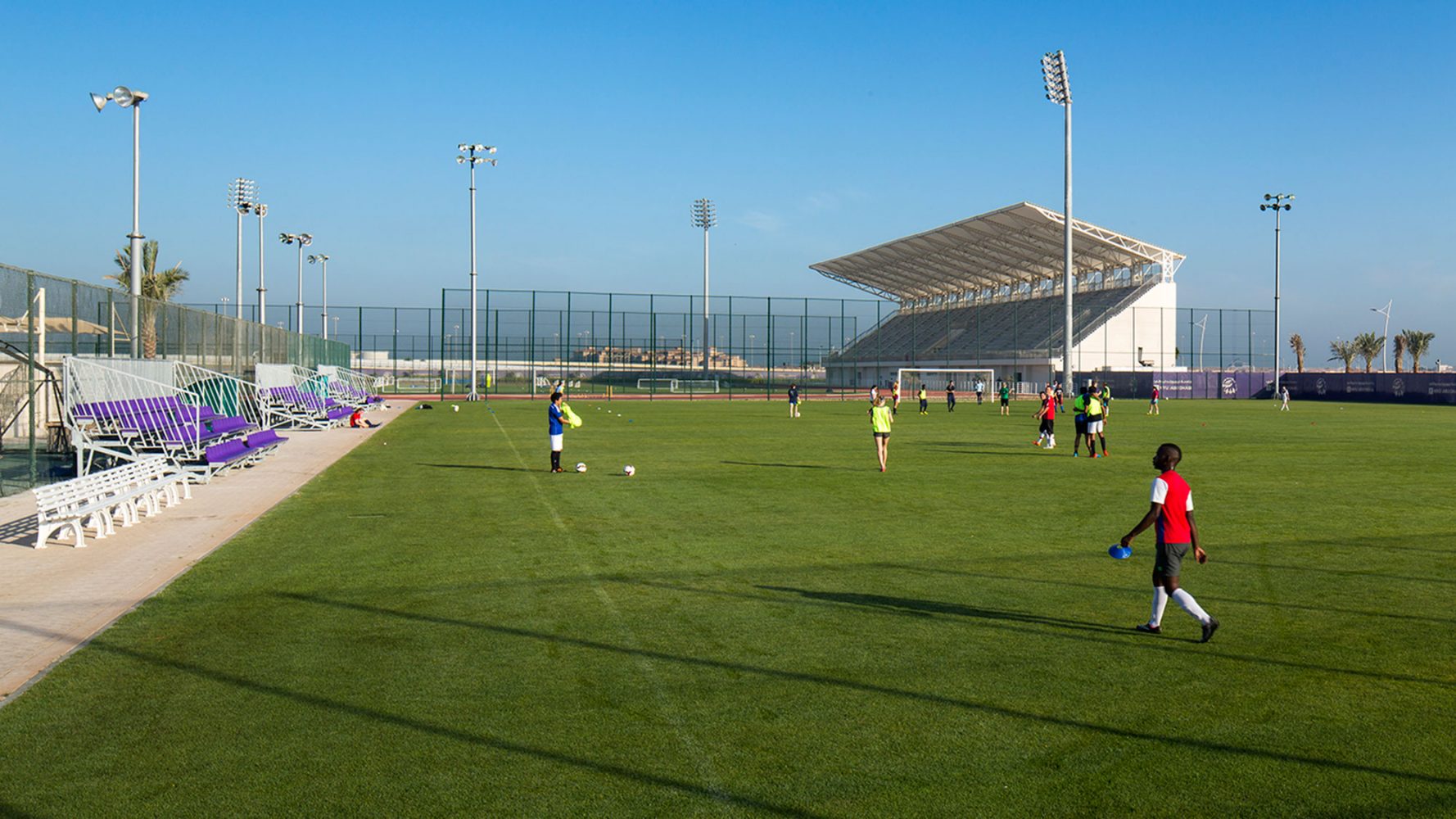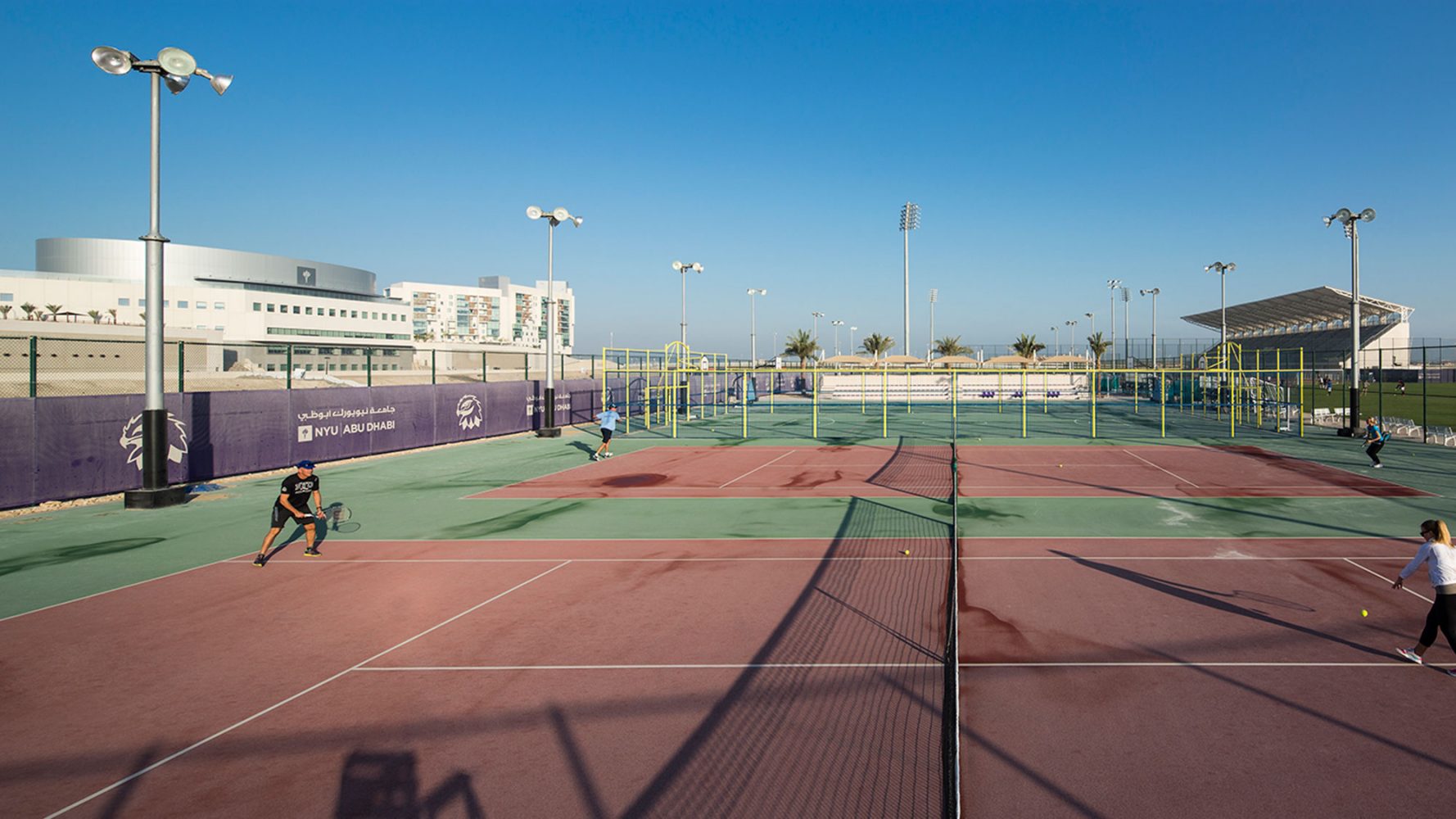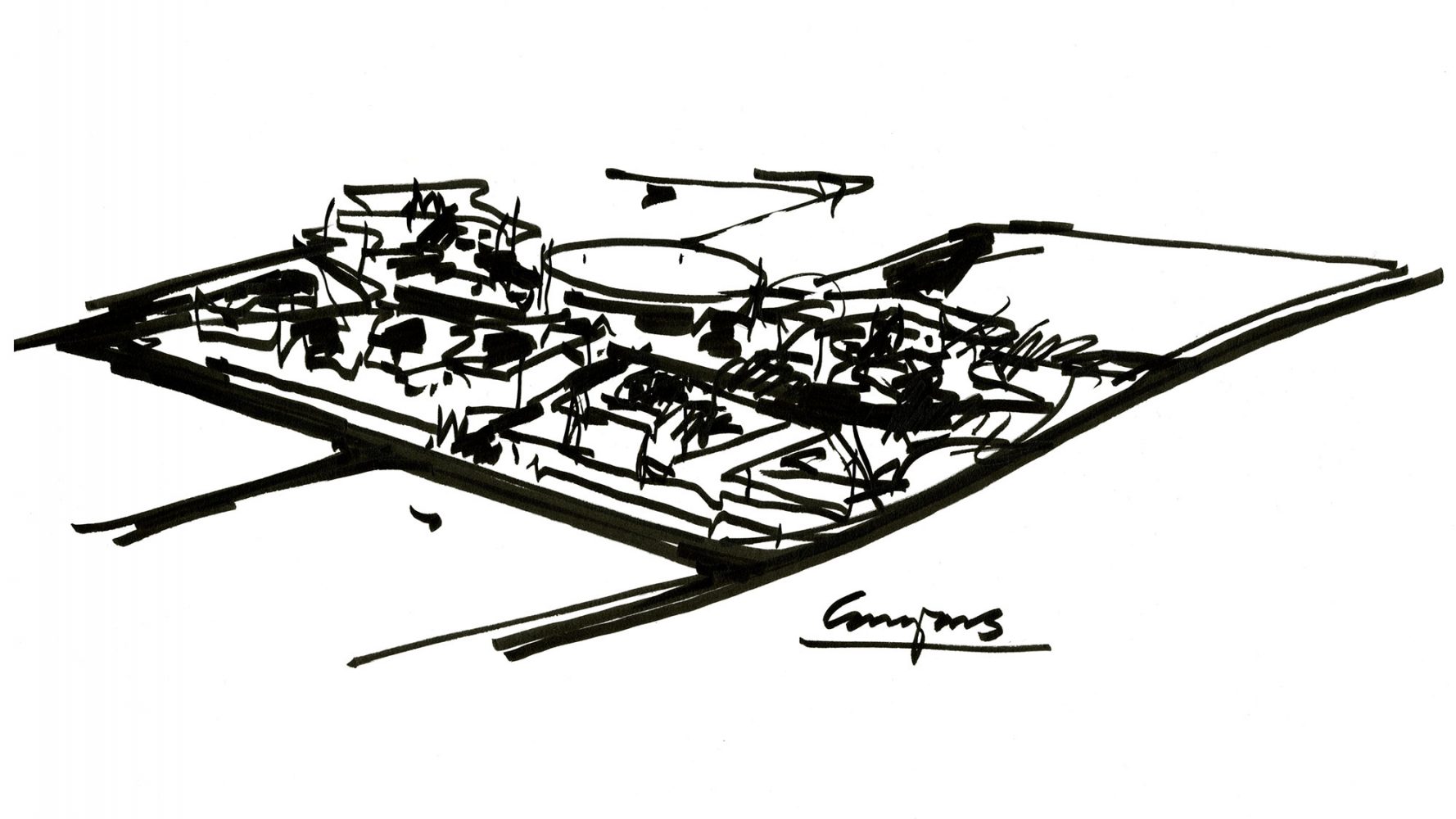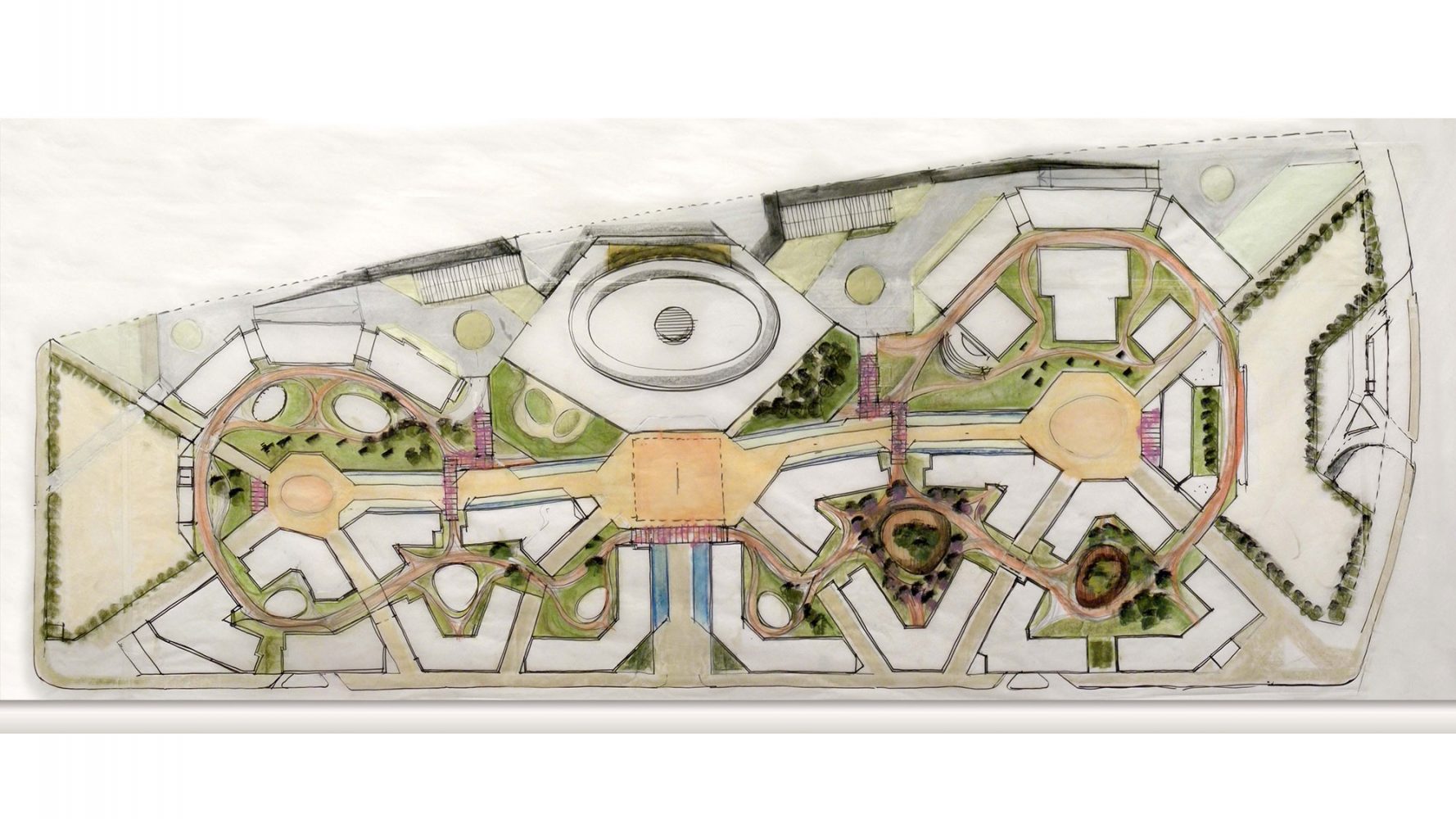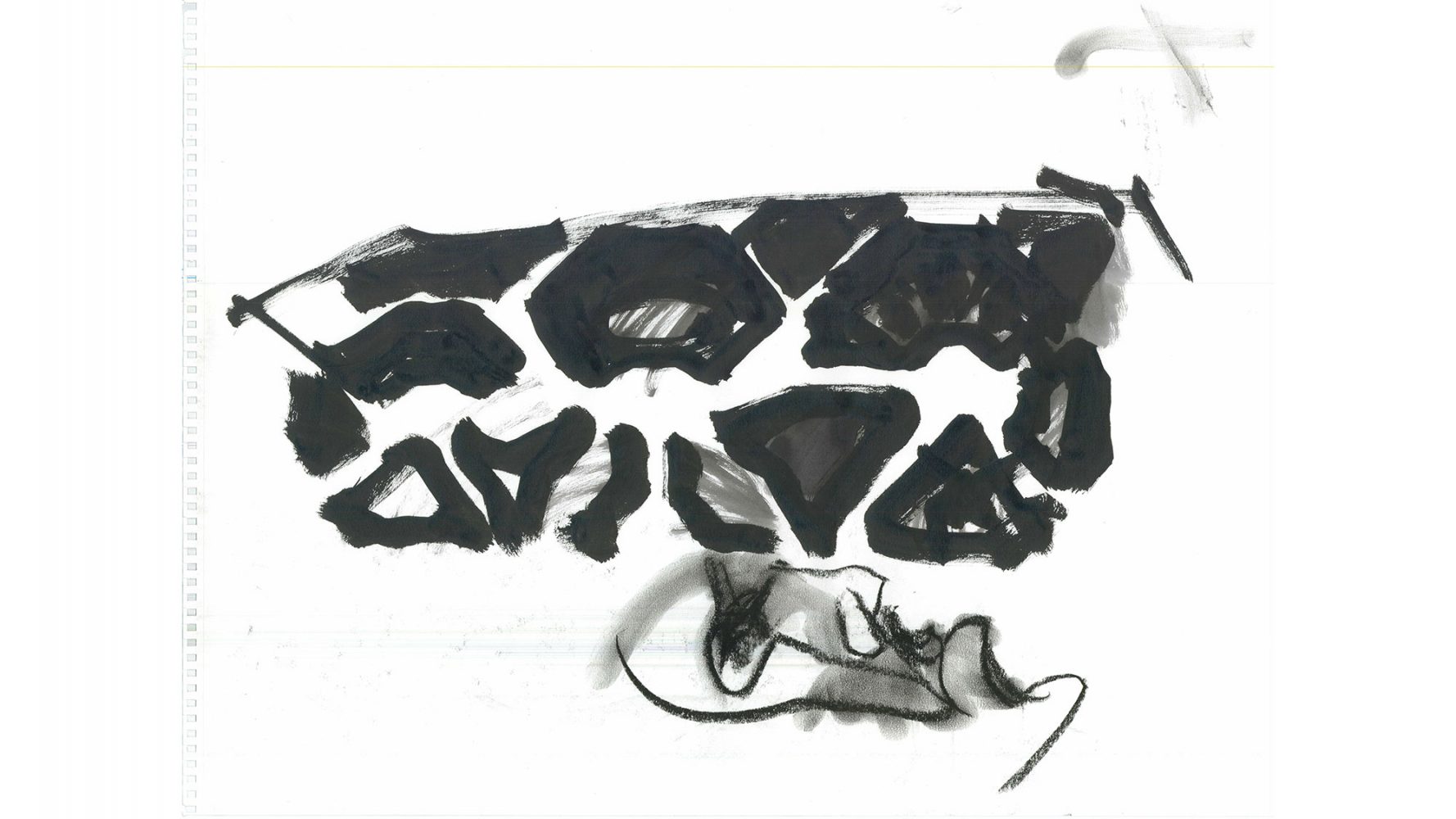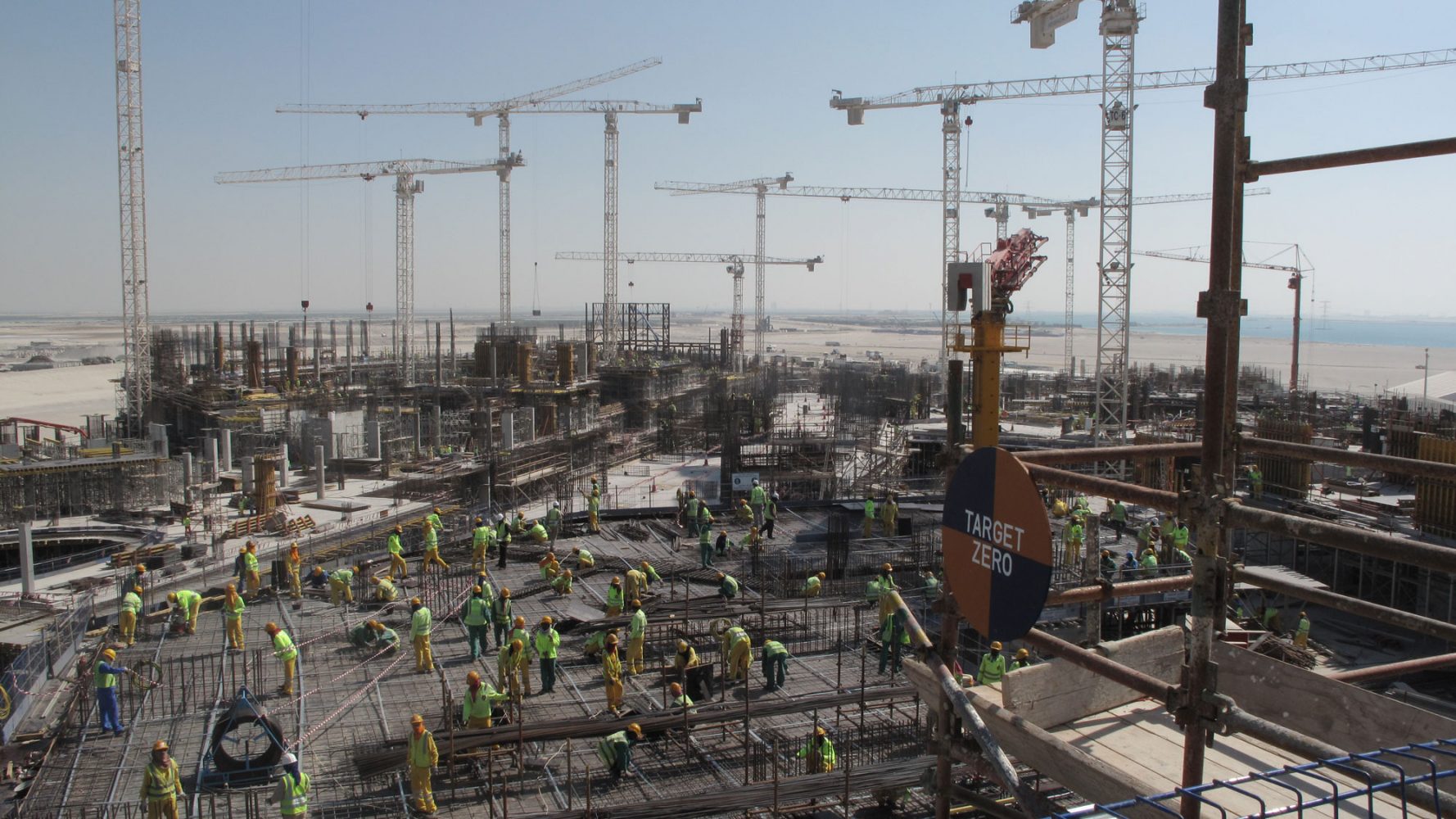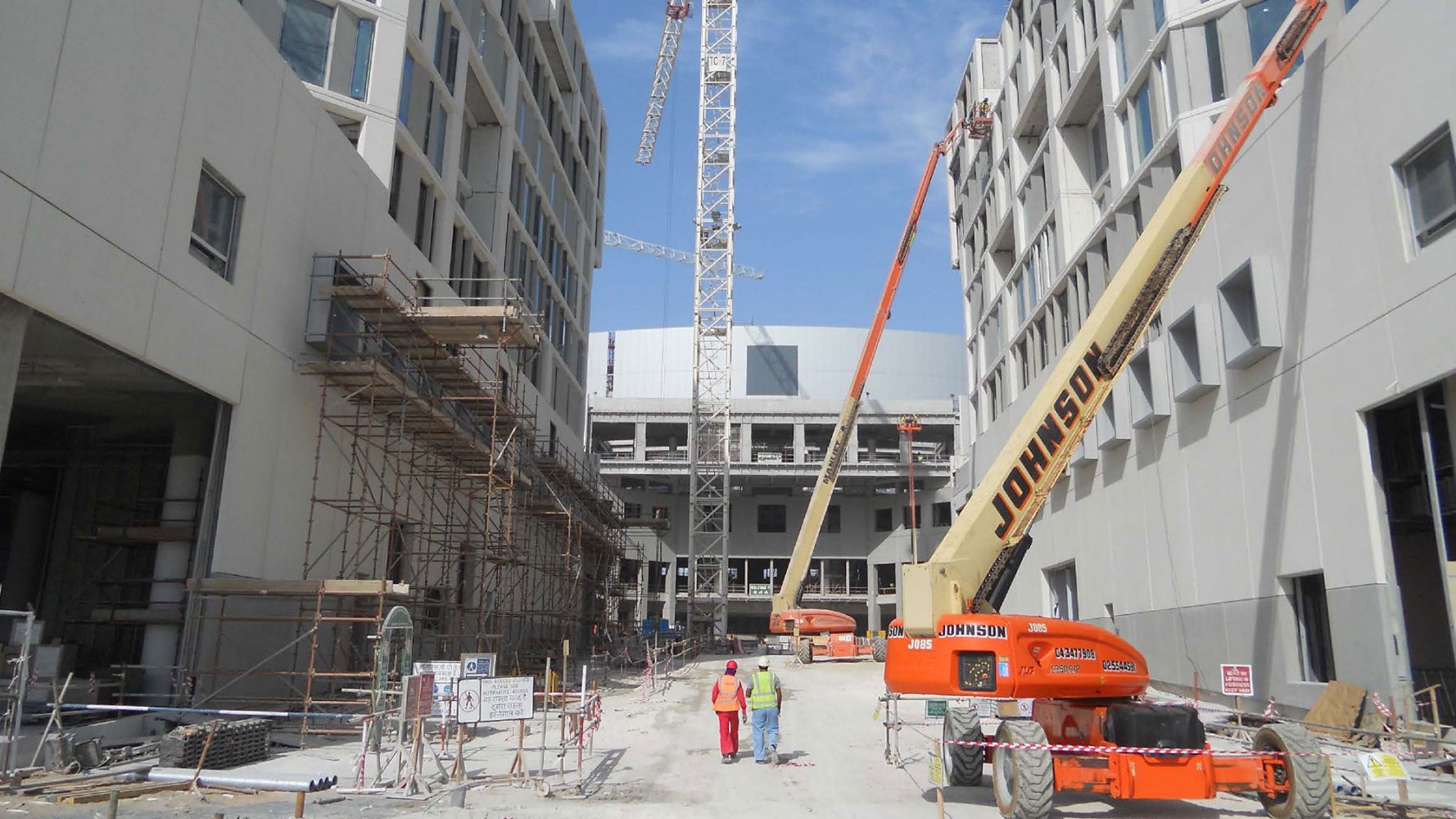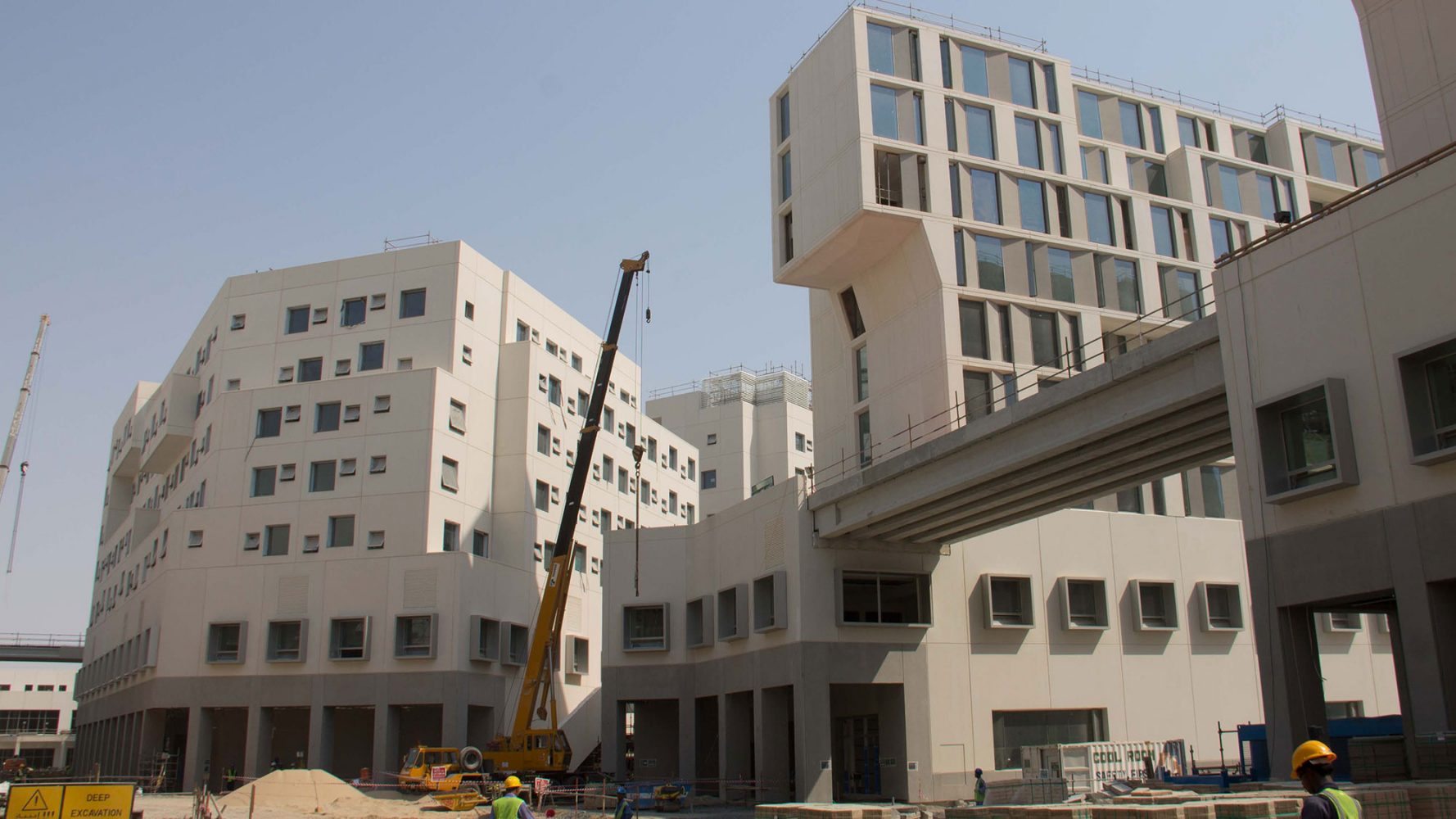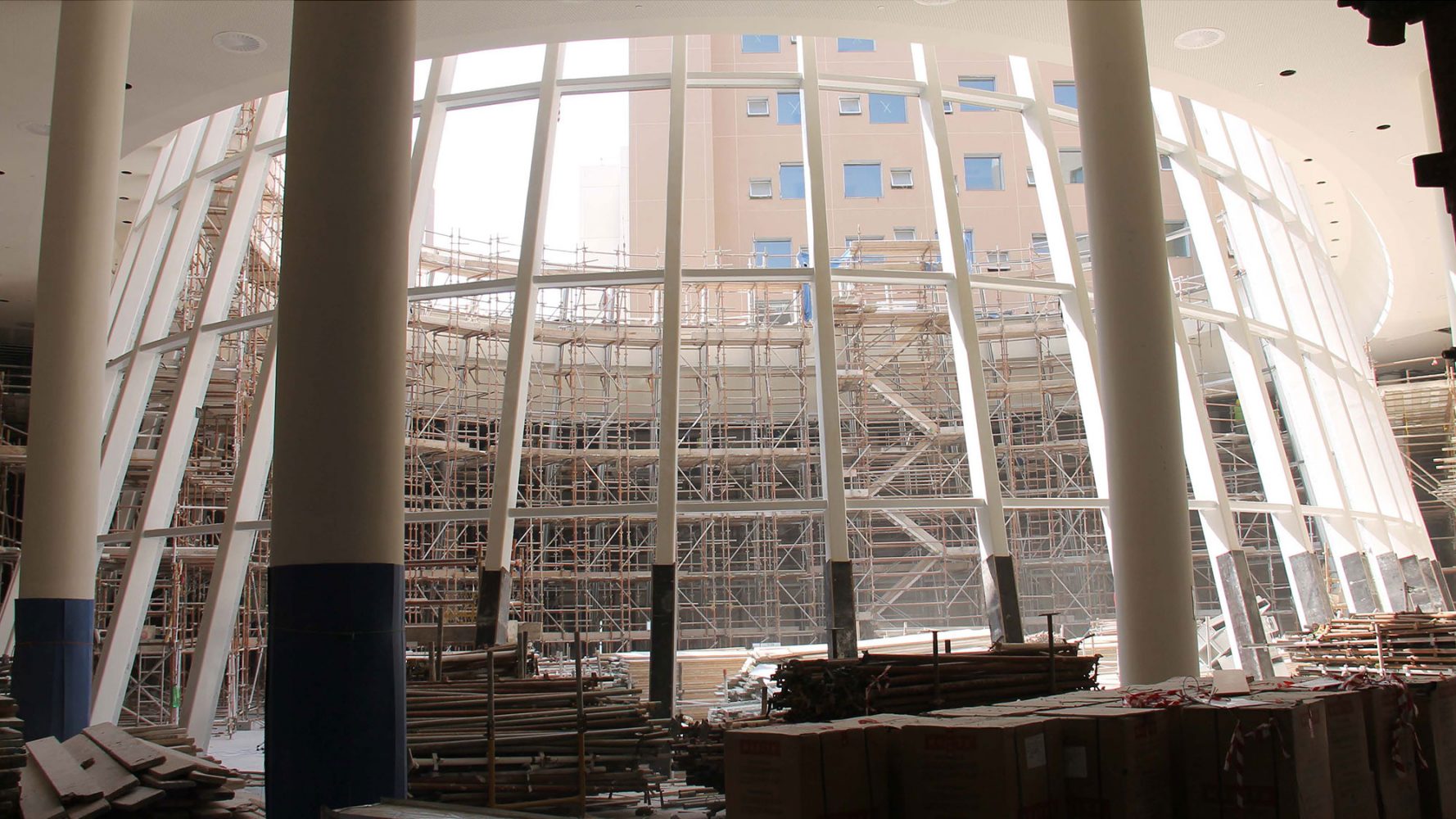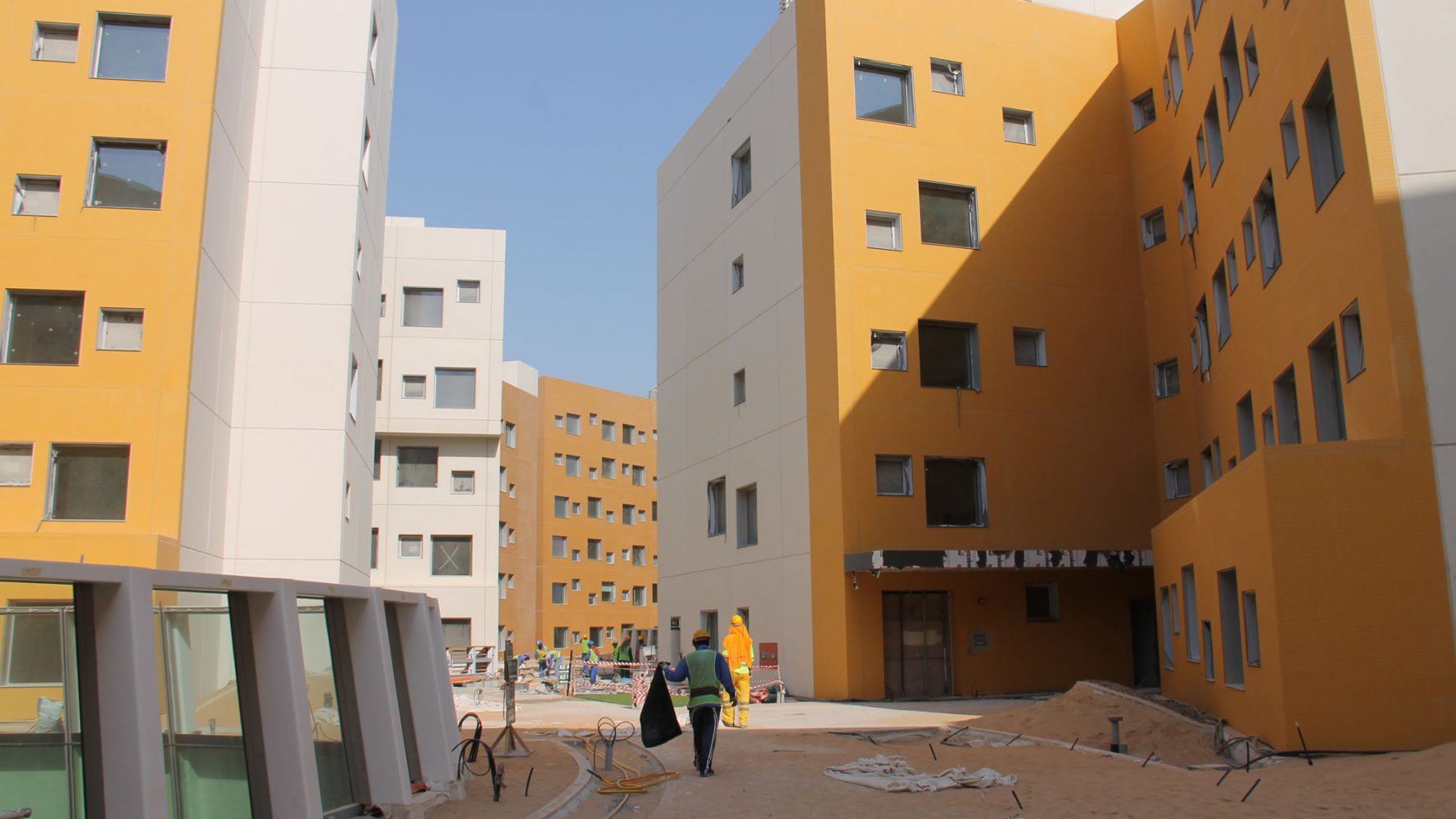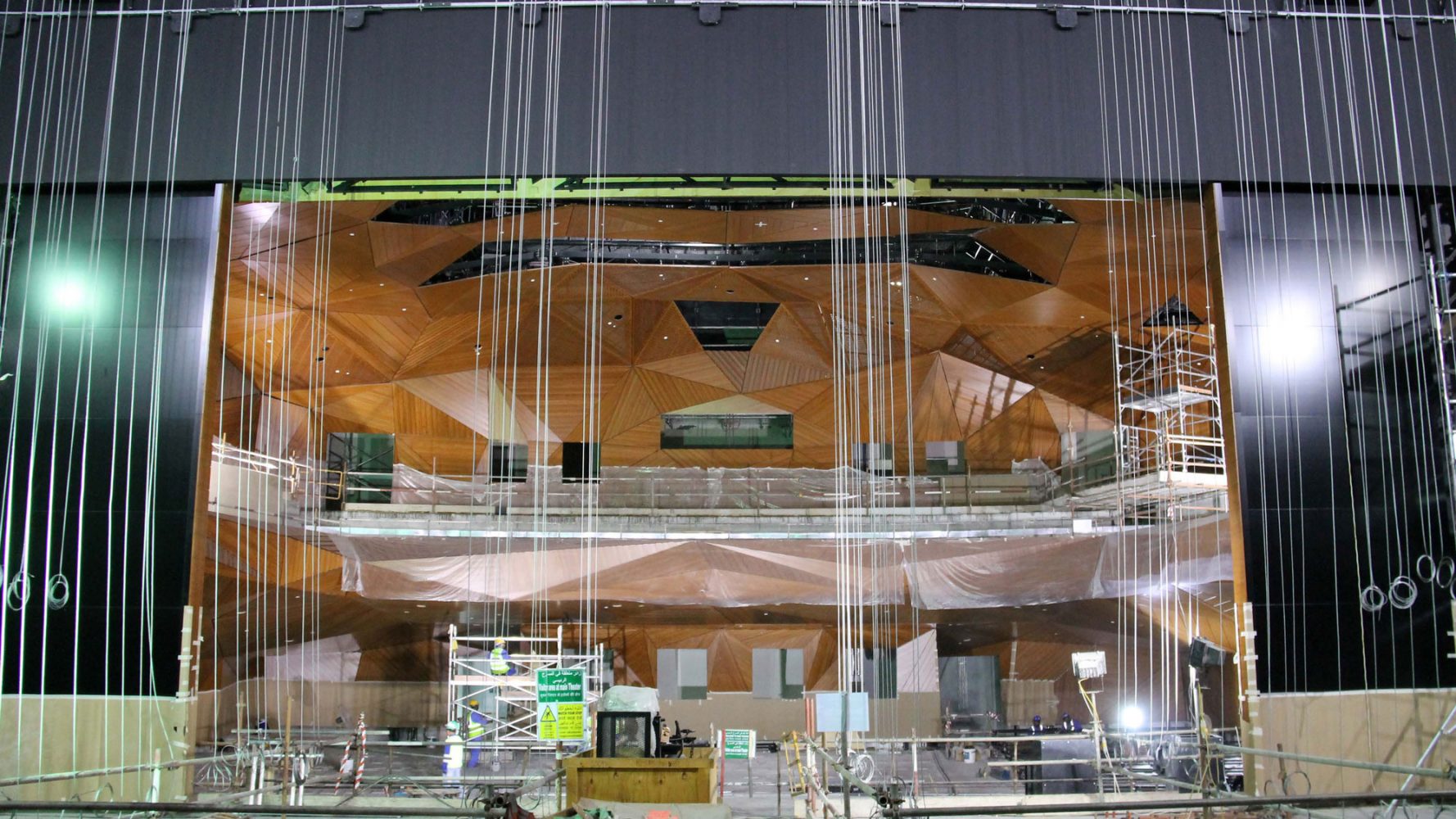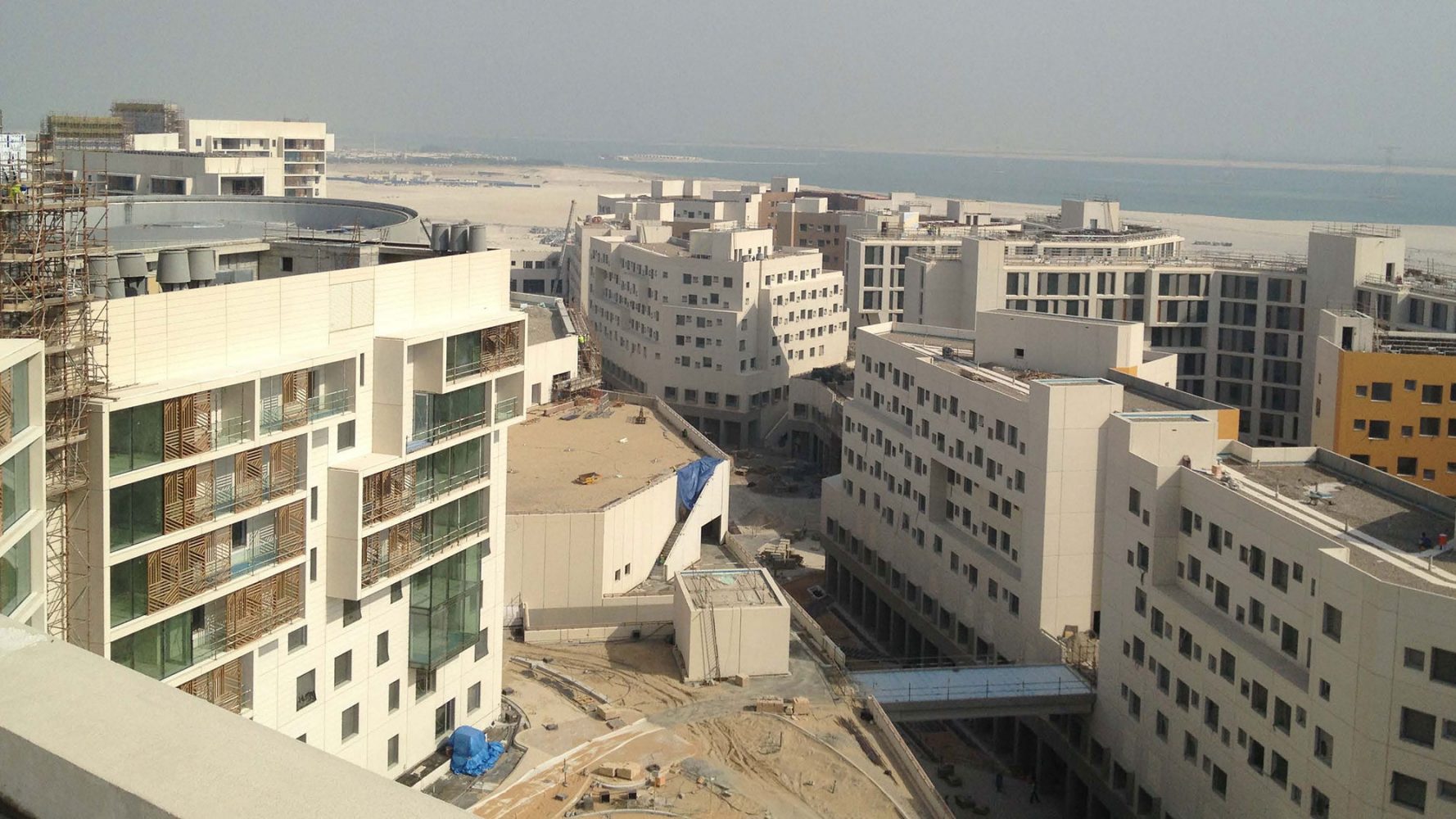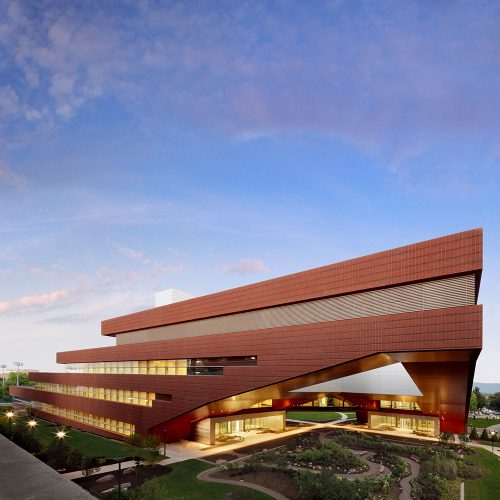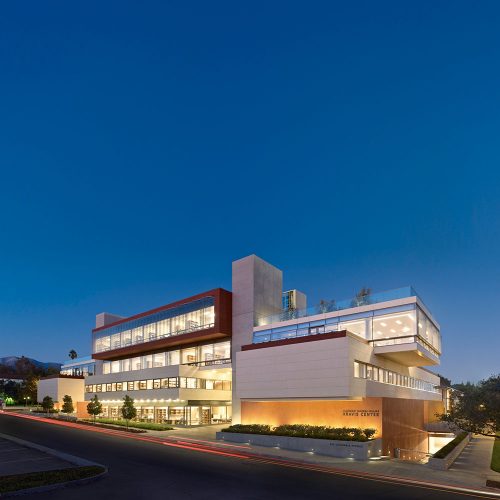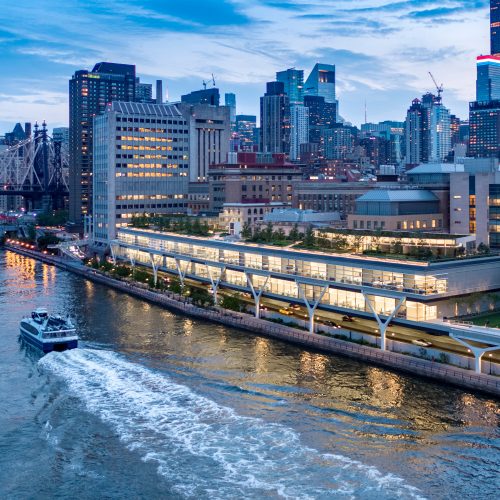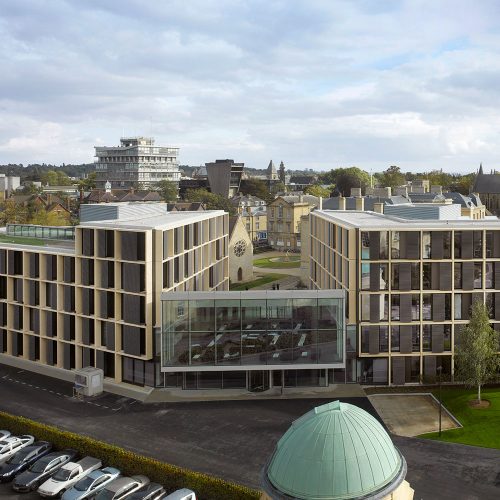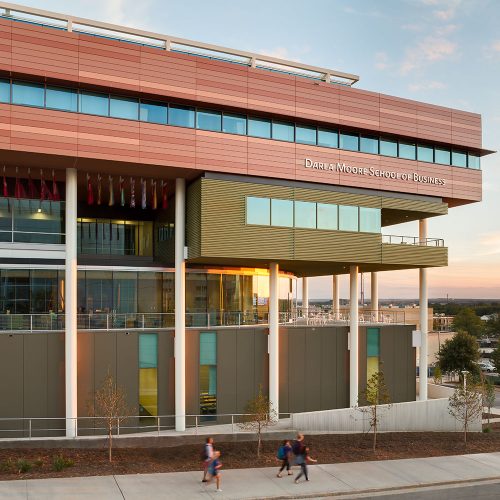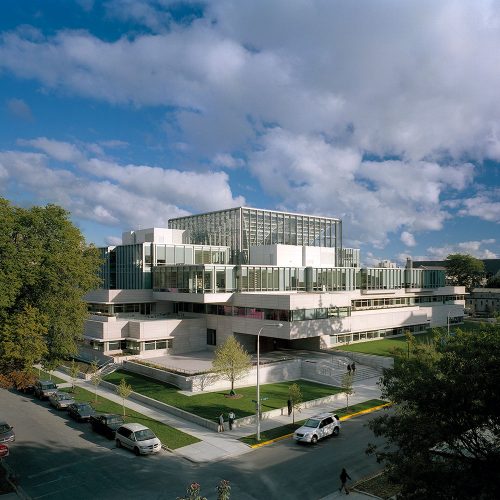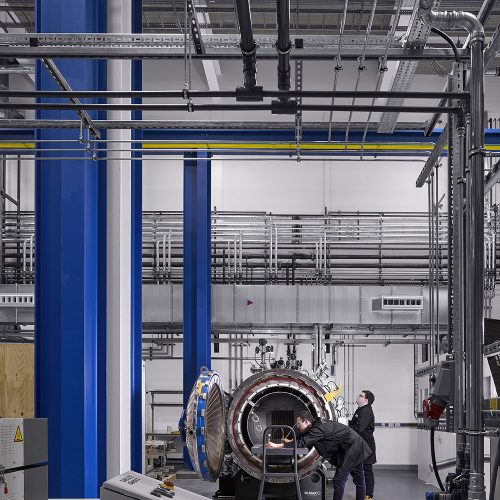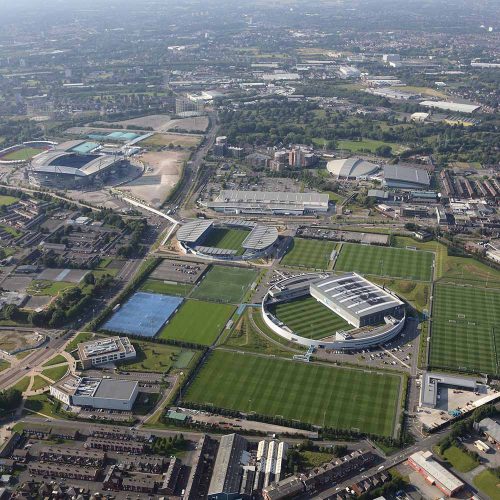New York University Abu Dhabi
A split-level, pedestrian-oriented network of 29 academic, arts, residential, student life, and research buildings integrate regional and Western planning typologies to create a comfortable microclimate that enables a flowering of intellectual liberalism in the heart of the Middle East.
Borne of a partnership between His Highness Sheikh Mohamed bin Zayed Al Nahyan and New York University, New York University Abu Dhabi combines a liberal arts and sciences college, select graduate programs, and advanced research, all fully integrated into a major research university on Saadiyat Island. Rafael Viñoly Architects led the programming of the new campus, and developed and executed the master plan following the completion of a series of land use and architectural alternatives. Drawing on regional typologies such as the Islamic garden and the madrassa, on the experimental complexity of Islamic geometries, and on the Western university quadrangle, the campus encompasses 371,600 gross square meters (3,999,870 gross square feet) of area in a split-level, pedestrian-oriented network of 29 academic, residential, student life, and research buildings.
New York University Abu Dhabi was planned from a “tabula rasa” within the context of an ambitious city plan. As such, the project had a limited local architectural context to converse with but a goal to create a compact, walkable environment that encourages multidisciplinary connections while adapting to the desert climate. The result is a two-level campus with narrow streets and building massings that are scaled to adopt the optimal ratio of shading and composed according to prevailing winds to promote natural ventilation. The streetscape design integrates landscape–with colonnades, native plantings, trellises, and traditional water channels–and urban morphology to create a comfortable outdoor space year-round.
The split-level circulation system also contributes to the pedestrian experience in its dense urban site. All buildings are mixed-use. At grade, the main campus street and three plazas provide access to the academic spaces, while the landscaped Level 2 High Line provides access to student and faculty residences. These vertically integrated buildings designed around shaded outdoor social spaces support the University’s goal for fostering interdisciplinary collaboration among researchers and students.
Each of the three campus plazas is anchored by a complex academic building. On the Main Street and Central Plaza, the 47,500-square-meter (511,290-square-foot) Campus Center combines the gym and the library, elements that are traditionally separated, as well as a variety of other student facilities, including the Wellness Center, multi-faith hall, dining venues, student clubs, classrooms, and offices. This concentration of activities establishes it as a busy hub of student life.
On the West Plaza, advanced scientific research is housed in the Experimental Research Building laboratories that adapt to changing research needs. On the East Plaza, the Arts Center–which houses a 700-seat theater, 150-seat black-box theater, recital halls, screening rooms, and arts education spaces–is located across from the campus’s public Conference Center and serves as a lively interface between the University’s faculty, students, and the city.


